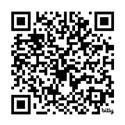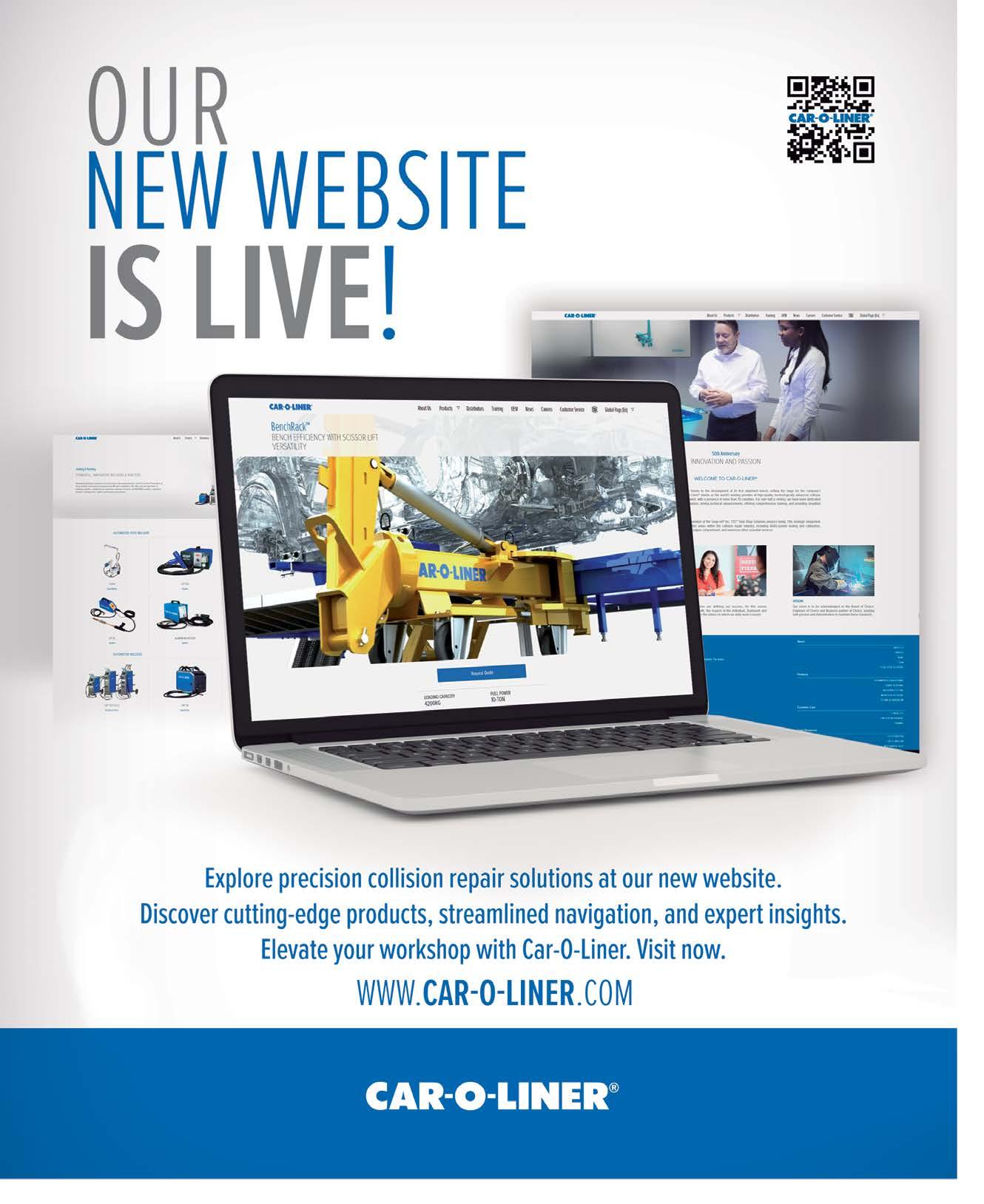
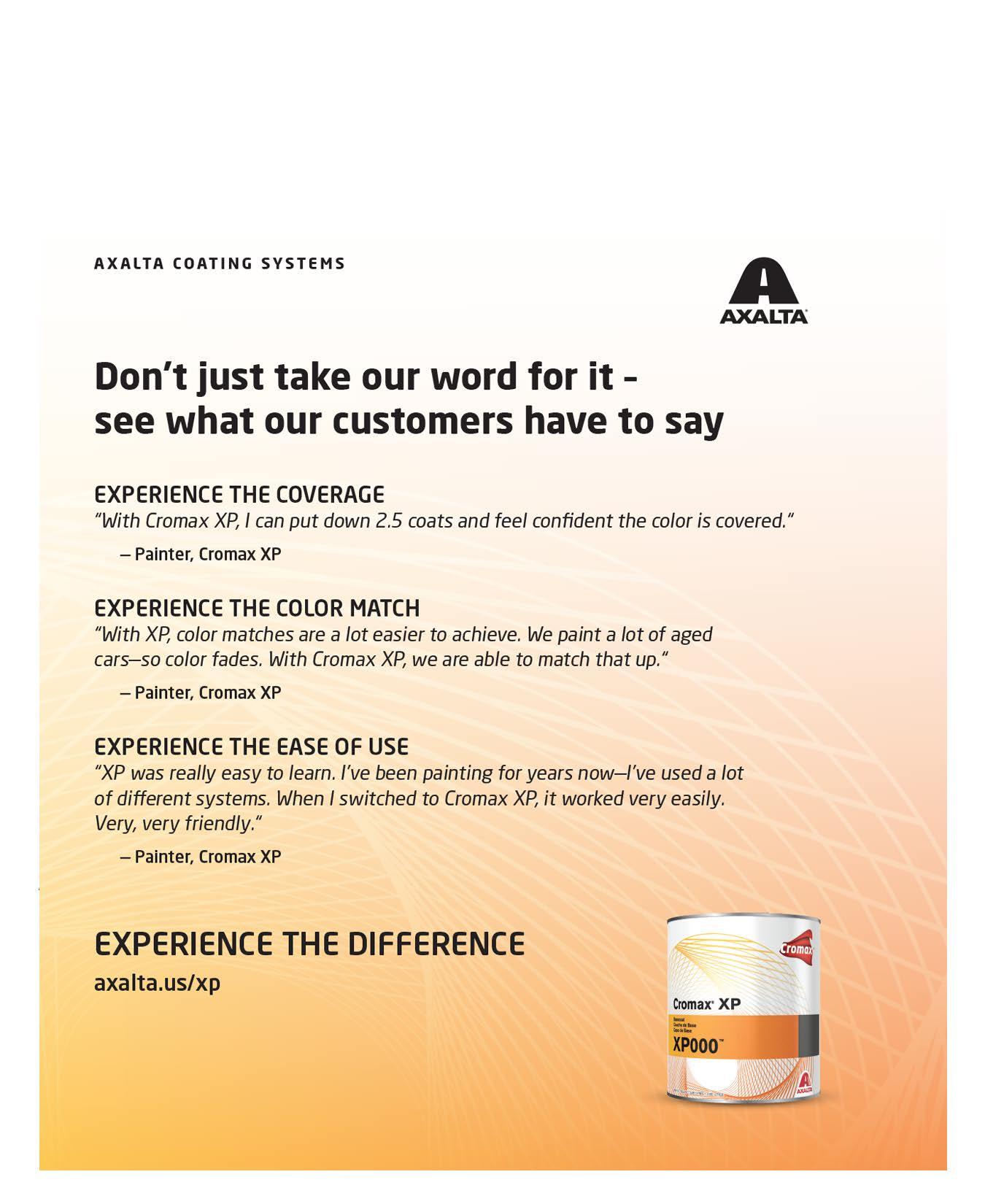



Electric vehicle sales are steadily growing worldwide, but perhaps not at the rate some automakers anticipated. Some are adjusting their production strategies to increase profitability, while others are forging ahead by introducing new EV models.
IDTechEx recently reported a 20% dip in global EV sales in the first quarter of 2024 compared to the last quarter of 2023 — but a 30% growth when compared with the
same quarter last year.
The report credited the sales dip to the consistent seasonal trend of lower sales in the first quarter compared to the fourth quarter. Despite this, EV sales have shown a steady upward trajectory year-on-year. Furthermore, regional sales comparisons indicate a rise in EV sales across all major markets, including China, Europe and the U.S.
Concerns about a downturn in the EV market often arise from

REGIONAL NEWS
A lawsuit filed by Alameda County District Attorney Pamela Price alleges auto insurers and software makers conspired to defraud drivers on whether damaged vehicles should be totaled or repaired, and how much would be paid.
The late-April legal action accused units of USAA and Progressive, along with estimating software makers Mitchell International and CCC Intelligent Solutions, of altering the software to produce for insureds a Market Value Report (MVR) that “misrepresents [and] substantially and materially understates” values, and thus payouts.
REGIONAL NEWS
The suit said this “rigs the settlement process in favor of a total loss scenario, and against a repair scenario … converting a loss that should result in repairs” to the total loss.
Insurance companies recoup more by selling vehicles for salvage, the suit said.
The lawsuit’s focus is consumers getting lower payouts if damaged vehicles would have been totaled anyway.
“Public safety includes protecting consumers from powerful companies that seek only to maximize profits,” Price said in a news release.
The suit gave examples of “realworld” vehicles, without personal
l CONTINUED ON PAGE 16
The Fix Network Apprenticeship Program (FNAP) announced its first graduate, Gabriel Duran, along with its approval by the Washington State Apprenticeship and Training Council.
FNAP, offered by Fix Network, offers an effective and efficient pathway to certification in auto glass repair and replacement services. The program functioned provisionally in Washington State and Oregon since October 2022, and received full approval in January. It is also
l CONTINUED ON PAGE 23
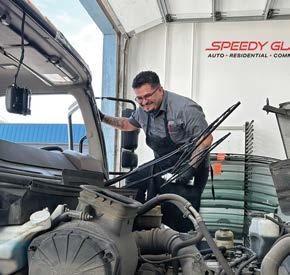

The SATA air vision 5000 puts the focus on effective health protection and lets you experience a whole new and comfortable way of breathing, due to a completely redesigned breathing air supply system. With its modern, ergonomic design, the hood can be adapted to fit almost any head shape, allowing the individual adjustment of its circumference, height and position.
Breathing air quality: Connects to a clean air supplied system, eliminating potential risks from breathing contaminated spray booth air.
No inhalation resistance, very comfortable breathing
High protection level (protects up to 100 times the TRK-value*)
Non-reflecting view due to solvent-resistant special foil
Low operating costs, quick pay-off of purchase costs
Soft-stream flow-optimized air distribution in the hood
Rigid bump cap for safer work conditions
SATA CCS Discs (Color Code System) allow to personalize hood, SATA air regulator and SATA air carbon regulator
To be used in conjunction with a filter unit, preferably SATA filter 584; air supply via approved breathing hose
*TRK –Technic al Reference Concentr ation (TRC)
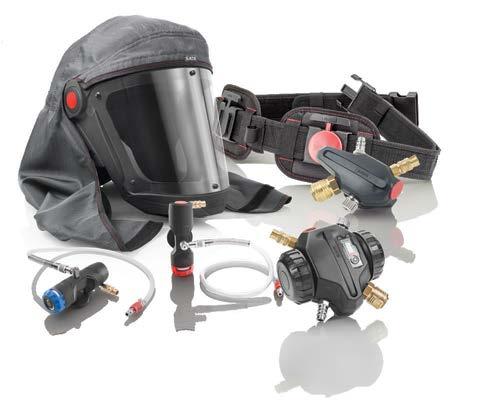
the SATA air vision 5000
Inc. 1 Sata Drive • PO Box 46 Spring Valley, MN 55975
Phone: 800-533-8016
E-mail: satajet@satausa.com www.satausa.com
Mike
12 Arrested in $350K Auto Insurance Fraud Scheme 29
California Considers Speed Limit Alerts for All New Cars 21
California Lawsuit Accuses Auto Insurers, Estimating Systems of Undervaluing Total Losses 1
California Moves to Expedite Insurance Rate Approvals 31
22
Abby Andrews Grow Your Collision Repair Shop by Investing in Yourself, Your Team 6
Growth Potential Driving Private Equity Interest in Collision Repair 10
How Collision Repairers Can Address Current Needs While Preparing for the Future 4
How to Determine if Investing in EV Repair Makes Sense for Your Auto Body Shop 18
Vehicle Characteristics, ADAS Features Shifting Claims Frequency, Severity 30
Stacey Phillips Ronak ETI ToolTech 2024 Fosters Collaboration
AirPro Diagnostics Preferred Supplier for Fix Network 13
Autel Approved for Nissan Central Gateway Access 16
Additive Launches 3D Printing Business 21
Automakers Adjust EV Strategies to Consumer Response 1
Yoswick
Companies
17
As the rise of emerging technologies collide with the collision repair industry’s talent shortage, two experts from I-CAR — Bud Center, director of technical products and curriculum, and Scott Kaboos, principal OEM technical lead and subject matter expert — visited The Collision Vision podcast, driven by Autobody News and hosted by Cole Strandberg, to discuss where the industry is today, the requirements and ROI for shops looking to invest for the future and what that future looks like.
Center said the increasing relevance of Advanced Driver Assistance Systems (ADAS), electric vehicles (EVs) and the use of mixed materials in vehicle construction are top of mind for collision repairers.
“We’ve got EVs and all the electrical side that one of your traditional collision repair techs would run from and say, ‘Send it over to the mechanic,’ or ‘Send it to the dealer,’ when it’s electrical,” Center said. “But now with all these EVs, we don’t have any choice. We have to develop that skill set on the collision side and really start jumping into it.”
EVs also use mixed materials to reduce weight, which comes with unique joining methods that also require new training, Center said.
Kaboos talked about the innovative tools and materials that have recently entered the market.
“First thing came to my mind was glue pulling,” Kaboos said. “We’re seeing some phenomenal glue pulling equipment that’s actually being used for structural repairs.”
Kaboos said ADAS calibration equipment is also making strides, as more and more OEMs endorse or allow the use of some aftermarket equipment. He said there are now more fixture jig attachments and specialized jigs for pulling, straightening and structural attachments.
Center said I-CAR is exploring 3D printing at its Chicago Technical Center, as some parts manufacturers are considering enabling the ability for shops to print some of their own parts, like brackets and clips.
“We’re starting to look at what does it take to get into that space? Is it really a viable option in the collision repair space or not? What type of materials do you need to use for that type of printing?” Center said. “What are the things you need to be aware of? You know, the pitfalls, so that you don’t start printing parts that fail.”
Kaboos said I-CAR purchased a laser welder for its Appleton Technical Center in Wisconsin to see if that technology — which automakers
makes sense down the road, consider investing in the tools and training to expand to other OEMs.
“I think a good idea is to specialize,” Kaboos said. “I think we’re going to see more of that anyway, where not everybody’s going to fix every car that comes in the door. And I think that’s a good thing.”
Center said technicians need to learn how to work on EVs safely. Batteries

Credit: Shutterstock
already use to build cars — could also be viable for collision repairers.
Kaboos said shops need to consider if they will do ADAS calibrations or EV repairs in-house, and if so, which manufacturers they’re equipped and trained to handle. Many shops don’t have the space and conditions to perform static ADAS calibrations in-house, Kaboos said, and a lot of dealerships don’t either, which has led to a rise in independent calibration centers.
Strandberg asked how business owners should look at a cost-benefit analysis when considering investing in new repair technologies.
Kaboos said shops should first consider their car count, and what type of cars they’re working on — is there a higher volume of any particular OEM’s vehicles?
Then shops should consider how much space they have available to possibly do ADAS calibrations inhouse.
“[Doing calibrations in-house] is not a requirement. It’s not a mandate,” Kaboos said. “It’s an opportunity where you need to make a smart business decision. You need to weigh the cost.”
Kaboos said it could be a good idea for a shop to invest in being able to calibrate the top two or three OEMs’ vehicles it works on, and, if it
He also touched on I-CAR’s Repairability Technical Support portal, which has an app that allows users to search by make and model for any repair information I-CAR has available, and the Collision Careers program, which I-CAR established to promote collision repair as a career option and attract new technicians.
Looking Into the Future
Strandberg asked Center and Kaboos what future technologies they foresee becoming an integral part of the collision repair business.
Kaboos said repairers are already seeing new OEM procedures, including ones to refinish bumper cover areas where ADAS sensors and cameras are located. He said rivet bonding, including self piercing rivets and low form rivets, will become more common.
“We’re seeing more manufacturers going to the gigacasting or mega casting method of assembly,” Kaboos said. “It’s a lot more cost effective for them to build a vehicle that way. So I think that’s going to be our future 10 years down the road, where we’re going to see a lot more of that.”
in a collision-damaged EV need to be checked periodically throughout the repair process, as they can suffer a “concussion.”
“In sports, you bang your head, you get a concussion; the battery reacts the same way,” Center said. “So something that is fine today may not be OK tomorrow.”
Kaboos said technicians also need to be aware of how many seemingly simple repair procedures can require recalibrations. If those aren’t complete, ADAS features may not work properly, which could cause a crash.
He said he also sees a skills gap in welding and other joining techniques, which can also lead to safety issues in a repaired car.
“We’re seeing that in MIG welding, MIG brazing, squeeze type resistance, spot welding, all of those disciplines,” Kaboos said. “And it’s compounded by the fact that the vehicle manufacturers are building the car with high strength steel, ultra high strength steel and then mixed materials. Now we’re seeing multiple attachment methods being used on just one simple part.”
Center said I-CAR offers a lot of training — both online and in-person — for ADAS calibrations, EV repair and mixed joining methods.
Kaboos said that will also possibly lead to more total losses, if the castings cannot be repaired. If they can, it will be a much more intrusive repair.
Strandberg asked what advice Center and Kaboos would give a collision repair shop owner.
Center said his first suggestion would be to implement a learning culture, if a shop doesn’t already have one, and to take advantage of resources like I-CAR’s Repairability Technical Support portal
He also suggested engaging with local vocational programs and career fairs to meet young people interested in a career in the industry, and to get involved with trade associations like the Collision Industry Conference.
Kaboos said the evolving repair methods are “the cool thing about this industry.”
“I was fixing my first car back in the ‘80s, and I look back at how I fix that car and it’s almost embarrassing,” Kaboos said. “We would never think of doing that anymore. But it was the norm back then and it was acceptable.
“If you stop learning, you’re going backwards, because the cars are moving forward. The technology is moving forward, the manufacturers are moving forward,” he added.
“There’s just no way tribal knowledge is going to keep up. It just doesn’t work anymore.”

Matt Ebert is the founder and CEO of Crash Champions, which grew from a regional MSO in the Chicago market to a national consolidator with nearly 650 locations — all in the span of about five years.
Ebert appeared on The Collision Vision podcast, driven by Autobody News and hosted by Cole Strandberg, to talk about his start in the industry and how he grew Crash Champions, offering advice for other collision shop owners looking to improve or expand their businesses.
When Ebert was 16, he wrecked his car. He knew a technician who worked on cars in the garage behind his house. Ebert asked the tech to show him how to fix his car, then started helping the tech fix other cars.
“I got into it literally by accident,” Ebert said.
In 1999, when Ebert was in his late 20s, he and the owner of a repair shop he was managing opened another shop together, New Lenox Auto Body in New Lenox, IL. They were partners for 15 years, until Ebert’s partner retired. Ebert bought him out and started growing the business into multiple locations. In 2014, it was rebranded Crash Champions.
By 2019, Ebert had grown Crash Champions to 11 locations. That year, he took on a private equity partner, and Crash Champions took off. Today, the MSO has nearly 650 locations nationwide.
Strandberg asked Ebert about some of the challenges he faced early in his career.
“I came from nothing, so it’s always been a challenge,” Ebert said. He said he once took out a total of $100,000 in cash advances on multiple credit cards.
Ebert and his partner in New Lenox Auto Body also dealt with the effects of the Sept. 11, 2001, terrorist attacks and the Great Recession of 2008. Later, after Crash Champions took on its private equity investor, it acquired its first two shops in new markets on March 1, 2020 — just before the COVID-19 pandemic shutdowns.
“The biggest lesson I learned is there’s always going to be a challenge,” Ebert said.
Pivotal Moments in Crash Champions’ Growth Crash Champions has twice bought MSOs that were bigger than it —
one of its first acquisitions, Pacific Elite in Southern California in 2020, had 23 shops, and in 2022, Crash Champions acquired Service King, which had more than 330 shops in 24 states.
Another pivotal moment was the decision to take on a private equity partner.
“For me, it was a little bit about what would be the risk of doing it alone,” Ebert said. At the time, Crash Champions only had locations in
uses to attract and retain talent include rewarding employees for recruiting others, and implementing apprentice programs for technicians and service advisors.
Ebert said Crash Champions currently uses the same EV training through I-CAR and automakers available to any repair shop, though he thinks it will develop internal training as it grows its footprint in luxury and EV repair. The company already has internal training on
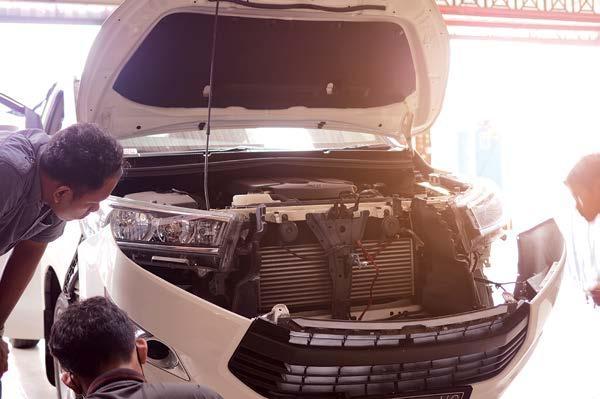
Chicago — the most consolidated market in the industry. Ebert said he thought about what the company would be worth if he grew it to 20 shops on his own, or if anyone else would want to buy it.
“So at some point in my life, if I was going to end up getting paid for all the work [I put into growing it], what would be my exit plan?” Ebert said.
In addition, in 2019, it was already clear vehicles would continue to get more sophisticated -- and it would take more capital to be able to invest in the equipment and people needed to repair them.
“So weighing all of those, for me, was why I ended up going the route I went,” he said.
“Robots aren’t going to be fixing cars anytime soon,” Ebert said. To attract employees, Crash Champions’ biggest focus is on its culture.
“So much depends on the leadership in your ability to retain people once you get them to get them there, as well as be able to attract them,” he said.
To facilitate that, Crash Champions puts its management team through a proprietary training program. “We’ve seen great results from that,” Ebert said.
Other methods the company
when they do make the decision to expand, Ebert answered from the perspective of an acquirer.
“It’s not about the number of locations, it’s the quality of the locations,” he said. “There’s just so much investment and overhead expense in this industry. You have to fix so many cars just to get to breakeven. And so having five shops that are barely at the break-even point doesn’t create a great business.”
Ebert said the biggest mistake is thinking sheer shop count numbers is going to make the business more attractive to a potential buyer. “It’s not about market domination. It should be about quality.”
“So at some point in my life, if I was going to end up getting paid for all the work [I put into growing Crash Champions], what would be my exit plan?”MATT EBERT FOUNDER AND CEO, CRASH CHAMPIONS
The Future of Collision Repair
ADAS, because it has been doing that work in-house for so long.
“I saw the need for that when we were just that handful of locations, six at the time, in Chicago,” Ebert said.
Ebert said he learned most industries that undergo consolidation continue until they’re about 65% consolidated; the collision repair industry is currently at about 30%.
“It still has a long way to go before it’s done consolidating,” he said. “If your desire is to grow and grow, there’s room.”
“I wasn’t living an extravagant lifestyle ever,” Ebert said. “It was keeping the money in the business and at work and growing it. To compete in the future, I think facilities need to be nice. Equipment needs to be able to repair the current vehicles.”
Another key is to surround yourself with the right people. “I can cite several examples of where I brought in people who have been where I haven’t been yet, so that they could help me not learn some of the lessons the hard way,” Ebert said.
When asked about mistakes smaller shop owners should avoid
Ebert said none of his predictions will come as a surprise: consolidation will continue to accelerate; claims will increasingly go through DRP programs, and thus to MSOs; vehicle complexity will continue to advance, requiring shops to invest in new technology; and the talent shortage will continue to present challenges.
To address those, Ebert said Crash Champions is spending more than $10 million in 2024 alone on new equipment and training for its team.
He said the company’s goal is to have great facilities, be easy to work for and have the best team. To attract more people, the collision repair industry needs to better promote itself as a viable career path, and raise technician pay to be able to compete with other trades.
Strandberg asked what legacy Ebert hopes to leave with Crash Champions and the industry at large when he calls it a career.
Ebert said he is proud the company can still say it is founderled, as it makes it relatable to other shop owners thinking about selling. “I was just one shop not that long ago and sat in every seat,” he said.
He said he is also proud of the team the company has built. “It’s a whole team of people working so hard at this. Everybody loves what we’re doing here.”
The adoption of Advanced Driver Assistance Systems (ADAS) has dramatically increased over the past decade, leading to significant improvements in vehicle safety and driving convenience. Popular features, including adaptive cruise control, lane assist, automatic braking, blind-spot detection, and collision avoidance, all rely on properly calibrated ADAS systems driven by many complex sensors.
There are several different types of sensors that are key to the operation of ADAS capabilities, including Radar, LiDAR, ultrasound/SONAR, and cameras, to name a few. All these sensors operate simultaneously, allowing a vehicle to perceive the surrounding environment. There are pros and cons for each type, so many manufacturers have determined that multiple systems need to be used to maximize safety. While LiDAR and camera-based sensing

methods require a direct line-of-sight to objects and hazards on the road, Radar and ultrasonic sensors can be painted, or hidden behind painted fascia components to avoid the use of unsightly cutouts. The use of radar and ultrasonic sensors behind painted layers means that special care must be taken to avoid the use of materials that can degrade sensor performance. Radar-related repairs are especially critical, since the radar systems have a much larger detection range and operate while the vehicle is moving at high speeds, compared to ultrasonic sensors which are mainly used for parking assistance. Collision centers must be aware of Radar and ultrasonic sensors because any repair in the vicinity of the sensor can decrease system performance, or in some cases, disable the sensor.
In the case of bumper repair, the first step is to locate the OEM procedures to determine if there is a sensor near the repair. If there is a sensor present, each OEM has a specific procedure on what can
be done to that area. For instance, most OEMs do not allow plastic fillers to be used to repair a crack near a sensor, instead, it may be necessary to replace the entire bumper assembly. Additionally, the painter must ensure that they do not exceed the maximum film build allowed by the OEM. Once you have validated the film build, you will also need to confirm that the selected paint has been approved by the paint manufacturer and OEM for use over ADAS equipment. Some OEMs list specific colors that can interfere with the Radar sensor performance, and are not allowed to be applied over the factory color. Colors that can decrease Radar sensor performance are usually silvers, golds and other colors with high concentrations of aluminum. Some manufacturers will allow one additional paint repair, while others specify a maximum total film thickness. Therefore, thickness measurement must be carried out prior to working on the bumper, and again after paint application. Finally, all OEM-specified calibration procedures must be performed to ensure proper sensor operation before the vehicle is put back into service.
There are also some general rules about ADAS on bumpers.
1. Use RADAR approved formulas. Some colors have RADAR approved formulas that have been approved by the OEM. If a color has a radar formula, it must be used when painting a bumper during a repair. These formulas have very strict tinting rules as well. In general, you cannot increase the percentage of aluminum or decrease the amount of binder.
2. Keep to the standard number of coats of paint. Use proper sealer shade or Valueshade when possible, to reduce the amount of color needed for hiding.
3. Do not blend over the top of a sensor. Always carry the color to completely avoid or cover over the sensor. Do not stop in the middle of the sensor area.
4. Mask the inside of the bumper to prevent scratches which could deflect or interfere with the sensor.
The importance of checking the OEM procedures and following these general rules cannot be stressed enough to ensure the vehicles are repaired safely and accurately. perfect solution for modern collision centers.

As new technology is developed to advance autonomous driving features in modern vehicles, start-up companies, like NODAR, are being established to help accelerate mass-market autonomy.
In April 2023, NODAR received the prestigious Grand Prix ACF AutoTech award in Paris, France. The computer vision company, based in Somerville, MA, is building next-generation 3D perception technology for autonomous vehicles (AVs).
To learn more about how this technology is expected to be used in ADAS and AVs, Autobody News talked to NODAR co-founder and COO Brad Rosen. The entrepreneur has a background in software engineering and an MBA from MIT. Over his career, he has been part of seven venturebacked startups where he held roles ranging from software engineer to CEO.
Q:A:
Can you tell us about NODAR?
Dr. Leaf Jiang founded NODAR in 2018 after receiving his B.S., M.S. and PhD at MIT, where he studied and implemented optoelectronic systems. As a recognized expert in light detection and ranging technology (lidar) systems, he spent 12 years at MIT Lincoln Laboratory building lidar systems for the U.S. military. I joined the company in 2019 to help Leaf develop the business plan around the camera-based 3D sensing technology he had been working on, as well as raise money.
Q:
Why is NODAR focusing on 3D sensing technology rather than lidar?
A:
Lidar is a useful and precise tool, but is not perfect for all applications requiring 3D information. Lidar is very expensive due to the electronic components required to measure photons, and lidar has low resolution as compared with cameras. Another shortcoming is that most lidars to date have spinning mechanisms, which break after about 7,000 hours. Knowing these points and that most intelligent machines regardless of market — whether vehicles or robots or monitoring equipment — will require reliable 3D information, Leaf set out to build a less expensive, higher performing, and more robust 3D ranging solution than lidar. Rather than lasers, Leaf used cameras and a technique that dates to the late 1800s called stereo vision, also referred
to as binocular vision, which can produce extremely accurate distance measurements.

Q: Can you explain NODAR s 3D ensing technology?
A: Autonomous vehicles require real-time and reliable longrange 3D information to navigate their environments safely and measure distances. NODAR’s patentpending Hammerhead™ 3D sensing technology was created to deliver new levels of safety to driver-assisted and full AVs.
The platform is based on untethered (independently mounted), off-theshelf automotive-grade cameras and NODAR software. It is for vehicles of any size — including automobiles, aircraft, ships, last-mile delivery robots and trains — and can maintain performance in harsh environments, such as highvibration, off-road or inclement weather, as well as low light conditions. NODAR’s long-range and high resolution allow for quick detection of small objects at long range, such as a black tire on the road at 200 meters. Having reliable 3D depth is critical for safe operation for any autonomous vehicle or safety monitoring application.
Q: How did hammerhead sharks inspire NODAR’s 3D technology?
A: Hammerhead sharks have exceptional depth perception due to their widely set eyes. NODAR Hammerhead™ employs widely positioned cameras in a similar way to calculate depth with exceptional precision by calibrating the cameras in real time, in software. Whether tracking prey in three dimensions through the ocean or navigating a complex and changing roadway, a wide-baseline vision system will outperform other types of 3D sensing. This allows
vehicle manufacturers to integrate cameras in novel locations, such as the sideview mirror, roof or headlights. For the first time, nearly any obstacle, from a brick to an overturned truck, can be detected well in advance with exceptional accuracy, giving the vehicle perception system sufficient time for evasive action.
Q:
What are some of the advantages compared to lidar?
A: Wide-baseline camera placement provides long-range (up to 1,000m), highly reliable, accurate 3D sensing and the ability to detect small objects at a distance, offering 10x the resolution of industry-leading lidars. The platform runs on industry-standard hardware and, with no moving parts, Hammerhead™ has a significantly longer lifetime than mechanical lidar. It also performs better in inclement weather and low-light settings due to the exceptionally precise calibration between the cameras enabled by NODAR’s algorithms. Using standard cameras rather than high-bandwidth optoelectronics as lidar does, Hammerhead™ is significantly less expensive than comparable lidar systems and the cameras can be mounted in a variety of orientations. In addition, camera movement from road shock, vibration, accidents and temperature fluctuations are automatically calibrated without the need for human and checkerboard, which, before NODAR, was the standard calibration procedure.
Q:
What are the company’s longrange plans?
A: Our goal is to be a ubiquitous component in every self-driving car and automated robotic machine. We believe every car, whether it’s L2 plus L3 or L4, robotaxi or L4 truck, should have a NODAR-powered stereo vision system. This will not only make automation systems more accessible cost-wise for more vehicles and buyers, but it will also raise the safety bar and reduce fatalities.
Q: What are some of the current trends with startup companies?
A: In Clayton Christensen’s book “The Innovator’s Dilemma,” the idea is that it’s very hard for large companies to create disruptive innovations because they’re held back by legacy thinking, politics and improperly aligned internal incentives.
As the automotive industry
transitions from hardware to software, the startup ecosystem is becoming extremely important. Cars are being re-thought from the ground up with a software-first focus, like Tesla for instance. Opportunities exist to innovate in all areas of automotive development, from digital design, to safety and ADAS systems, to interior experience, to the contribution of AI in each area. Startups have the chance to bring disruptive thinking to this rapidly evolving ecosystem, and push on the traditional automotive development cycle.
Q: What are some of the new technological developments you are seeing in the industry?
A: One area of constant innovation is batteries and EVs. New developments are popping up every day in the battery space looking to develop higher-power density, safer batteries made from “greener” components. This is critically important as the world adopts more and more EVs. And then there are the topics of how to charge these new electric cars and recycle the batteries. I’m seeing lots of innovation in these areas as well.
On the software side, we’re seeing developments related to infrastructure and how to most efficiently use energy. Related to automotive, research is being done regarding how our EVs become part of a larger electric grid, taking energy from the grid when needed and sharing (or selling!) energy back as needed. There’s a lot of software that will come to bear around managing the flow of energy as we store it in batteries.
I also believe hydrogen will play a very important role in the future. Honda’s new CR-V is powered by a hydrogen fuel cell and is available for lease to California residents. Obviously, hydrogen creation is a critical area of innovation to support hydrogen vehicles, as well as the topic of hydrogen charging stations. Last, we’re seeing the effects of AI initiatives, such as ChatGPT, all around us and starting to affect our everyday lives. AI is prevalent today in many vehicles, for instance in Tesla’s Autopilot and FSD systems, or Mobileye’s EyeQ ADAS system. These products are trained on millions of hours of driving and simulation data to augment human driving. This area of innovation is ripe for startups to contribute to.
To encourage innovation in the automotive industry, Grand Prix ACF AutoTech holds an annual contest to reward international startup companies devoted to the auto sector. In April, three businesses were recognized in Paris, France, as part of the seventh annual competition. Genomines, Diamfab and Cylib received awards for their excellence in commercialization, manufacturing and design.
More than 94 applicants from 19 countries took part in the contest. The event was hosted by the Automobile Club de France, founded in 1895 by French carmakers, and ESSEC Business School, a school dedicated to developing the next generation of entrepreneurs.
“We are excited to announce our winning companies – all promising startups in the automotive industry,” said Richard de Cabrol, managing director of Grand Prix ACF AutoTech.
Genomines received the Grand Prix ACF Award, designed for companies that are the most advanced in their development and have received a round A of funding or more. The company recovers metals from plants to produce nickel without mine facilities. Nickel is a metal used in the mobility sector, especially in the manufacturing process of batteries.
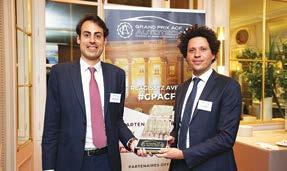
“We are honored to have won the award Grand Prix ACF AutoTech,” said Fabien Koutchekian, CEO of Genomines. “It was a great opportunity to pitch Genomines to influential experts and players in the automotive industry.”
Koutchekian said the company is very grateful to have received such personalized support before and after the event.
“This award means a lot to us, and above all, we are extremely pleased to see how the automotive industry is committed to supporting impactful solutions for the energy transition,” he added.
Diamfab was given The Prix Pionnier ACF Award, which recognizes the youngest startups at the seed funding stage. Diamfab specializes in diamond semiconductors designed for power electronics and quantum applications. The components are expected to help revolutionize the mobility industry by optimizing system costs, reducing weight, minimizing the carbon footprint and mitigating environmental impact.
because we want to make battery recycling more sustainable and enable a green energy transition,” said Linus Glowinski from Cylib. “Sustainability is in our core DNA and we’re beyond excited to receive such positive feedback and acknowledgment.”
Grand Prix ACF AutoTech was established 2017 as a joint venture between the Automobile Club de
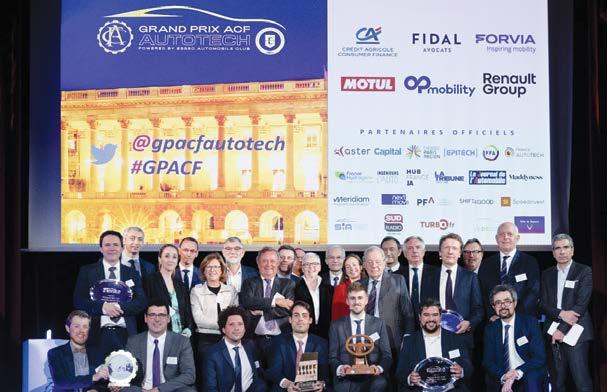
“We are deeply honored to receive this award from such a prestigious organization as the ACF,” said Ivan Llaurado, chief revenue officer and co-founder of Diamfab. “Participating in the contest has been an incredibly rewarding experience. Hearing Gilles Le Borgne, the Renault Group CTO, affirm that Diamfab has the potential to significantly impact the automobile industry was the highlight of the event. Beyond the recognition, which greatly motivates our team, we believe this award will accelerate the development of the next generation of power electronics.”
Llaurado said they are already scheduling meetings with key industry players, and the Prix Pionnier ACF award is undoubtedly a significant catalyst for the company’s growth. He encourages all automotiverelated start-ups to participate in the contest and all industry stakeholders to closely follow it to uncover new opportunities.
The Mention GPACF GreenTech Award, given to startups that have a positive impact on the environment, was received by Cylib, which has developed a holistic, eco-efficient process for recycling Lithium-Ion batteries.
“Winning the Mention GPACF GrennTech award means a lot to Cylib
“We cannot do everything internally because the spectrum of technology is too wide,” he said. “You cannot be a specialist in everything.”
Salessy, a contest judge, explained promising startups were selected that align with the industry’s expectations and shared some current trends.
“The first one is electrification of vehicles or carbon-neutral vehicles,” he noted. “When we talk about electrification, we are including hydrogen applications.”
He said that electrification covers the electrical powertrain, battery chemistry, energy efficiency of the engine, converters and the charging system, as well as the technologies associated with connectivity to simplify the user experience.
He said automakers are also focused on developing advanced driver-assistance systems (ADAS) centered around safety to help drivers better anticipate road situations.
In addition, Salessy said new technology based on artificial intelligence (AI) is being developed to provide drivers with a more personalized experience.
France and ESSEC Business School. Since then, the focus has been on propelling innovation amongst automotive industry entrepreneurs and promoting efficiency and sustainability.
In addition to a financial reward, winners receive an investment assessment, business coaching, legal support, potential investment capital and networking connections with corporate affiliates.
“Our goal is to leverage the expertise of some of the most wellknown companies in France to help establish developing startup companies,” said de Cabrol.
Mentor companies include Renault Group, Forvia, Plastic Omnium, Crédit Agricole, FIDAL and MOTUL.
“It’s a win-win situation because we bring them in and give them a lot of visibility and it’s also an opportunity to find the next disruptive type of technology that we might use in our vehicles,” said Jean-Francois Salessy, Renault’s vice president of vehicle advanced engineering and upstream technologies, who joined the company in 2022.
He said that many auto manufacturers, including Renault, take a horizontal approach and identify the best partnerships to develop vehicle technology.
Since the inception of the contest in 2018, de Cabrol said each of the finalists has seen proven success.
NODAR, based in Massachusetts, received the Grand Prix ACF AutoTech award in 2023 and Brad Rosen, NODAR’s COO and co-founder, was a contest judge this year.
Rosen said NODAR has been working on disruptive ideas focused on automated driving and parking since 2018, and believes many opportunities exist for startups in the automotive arena as software becomes a driving factor and business model shift.
“We’ve benefited greatly from winning this competition last year, including establishing meaningful partnerships with some of the sponsors,” said Rosen. “The Grand Prix was top notch and managed extremely well, from the communications and awareness to the level of competitors, quality of sponsors, and finally, the beautifully run event at the historic ACF facility.”
He said companies don’t have to be based in France or even Europe to participate and win and encourages other startups to learn about the 2025 competition, which will be accepting applications in October.
For more information, visit en.grandprixacfautotech.com.
A new report from Focus Advisors showed private equity firms have invested more than $9 billion in the collision repair industry in the last five months alone, despite interest rates that are significantly higher than even a year ago. Private equity now collectively manages more than $400 billion in assets within the industry.
One of those private equity firms is Kinderhook Industries, which in March announced it became the lead investor in Kaizen Collision Centers, in partnership with Jacob Tilzer and LNC Partners. Founded in 2013 by Tilzer and headquartered in Scottsdale, AZ, Kaizen has 48 locations across Arizona, Colorado, Southern California, Iowa, Nebraska and Nevada.
Kaizen is Kinderhook’s 30th automotive/light manufacturing platform investment. The firm’s portfolio also includes Repairify, parent company of asTech, and Continental Auto Parts, an aftermarket
equity firms see collision repair as an industry with a “tried and true strategy” and a strong outlook.
“Places where you’ve got real strong organic tailwinds, coupled with opportunities for M&A [mergers and acquisitions] are good for private equity interest,” Cifelli said.
Increasing severity and vehicle complexity are driving up the cost of repairs.
“Those will continue going up, so it will continue to be more and more expensive to repair, so you’ve got built-in inflation for the next few years at least,” Cifelli said.
Firms interested in investing in collision repair shops are looking for great cycle times and CSI scores. If a shop has a list of DRPs, that can prove its ability to operate in that world.
“PE is really focused on operations, and having those scores that are important to insurance companies be above the averages,” Cifelli said.
Geography is also key — some markets have more population growth than others.
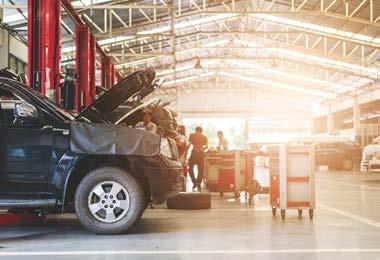
collision parts distribution company headquartered in New Jersey.
Paul Cifelli, managing director at Kinderhook, said the firm was approached in summer 2023 by its lending partner, Twin Brook Capital Partners, about investing in Kaizen. Kinderhook already had experience in the collision repair industry; it previously owned ProCare Collision, growing it from eight to 45 stores in four years before selling it in 2021 to Classic Collision.
Cifelli said Kinderhook was interested because Kaizen had a good footprint in markets with strong demographic growth and a lot of remaining opportunity for consolidation. In addition, Vince Brock, a Kinderhook executive who had been CEO of ProCare when the firm owned it, was looking to get back in the collision repair game.
In general, Cifelli said private
Focus Advisors said the private equity sponsors that have recently entered the industry or increased their positions have mostly replaced smaller firms. TPG Capital’s acquisition of Classic Collision introduced one of the world’s largest alternative investment funds to the industry.
“I would tell someone starting a [collision repair] business to go somewhere like Texas or Florida, places people are moving to,” Cifelli said. “That leads to congestion and traffic, which ultimately leads to collisions.”
In Focus Advisors’ report, it said of the $9 billion invested in the last several months, the biggest chunk was $4.6 billion by Caliber Collision, which issued new debt to refinance existing debt and fund a significant dividend for current shareholders.
Crash Champions also refinanced a significant piece of its debt and brought in an additional equity investment, which it is using for more acquisitions.
The original private equity sponsors of VIVE Collision, Garnett Station Partners, sold to a larger private equity firm, Greenbriar Equity Group. Similarly, Center Oak Partners, original private equity sponsor of CollisionRight, sold the company to Summit Partners, a much larger private equity firm.
Classic Collision, after less than five years with New Mountain Capital, announced a recapitalization with new sponsor TPG Capital, the private equity arm of the $220 billion global asset management firm TPG.
The Investors
Large firms see an opportunity to accelerate their growth as the availability and cost of their capital vastly exceeds smaller players and independent shops, Focus Advisors explained. Another reason is that increased revenues — driven by higher labor rates and calibration — have positively impacted EBITDA margins, making them more attractive to lenders and new investors. And there’s also the ongoing attractiveness of arbitraging acquisitions. Buying strong single shops and small MSOs at five to seven times EBITDA while raising capital at valuations of 12 to 14 times allows this new capital to effectively leverage their superior capital into faster growth.
Early private equity investors take more risks when they acquire platforms and then add more MSOs and single shops. They are supporting management teams that may not have proven themselves in operating at a much larger scale or buying and integrating multiple targets in a shorter span of time. The playbook for these earlier investors is pretty much the same with a few variations.
As early investors succeed in launching platforms, their acquirers
“Places where you’ve got real strong organic tailwinds, coupled with opportunities for M&A are good for private equity interest.”
PAUL CIFELLI KINDERHOOK INDUSTRIES
are buying with expectations the risks have been reduced. The predictability of cash flows has increased. The management teams are more proven. The costs of acquisitions and new locations are more stable and the direction of consolidation is more clear. And the very large private equity firms are able to write much larger checks — in fact, they need to write larger checks given the size of their funds.
Focus Advisors said it tracks more than 120 private equity firms that have examined the collision repair industry, and its team has had conversations with more than 100 of them over the past 12 months. Some are already well-informed; others are rapidly coming down the learning curve. Successful growth and exits by other PE firms are driving much of the interest.
For many of these prospective investors, the nuances of the industry often surprise them. There are substantially different challenges in collision repair from the more conventional strategies that have worked so well in other industries. Among those challenges is the fact third-party intermediaries — insurance companies — heavily impact the flows of business through DRPs. In addition, the skill sets needed to create profits reside in a technical workforce that has been in short supply for a generation.
With more than 80 MSOs with five or more shops that Focus Advisors has identified in its proprietary database, there is no shortage of candidate platform targets, depending upon the appetite of PE investors. While there are relatively few $30 million revenue platforms, there are many in the $15 million+ range. The true scarcity is management teams that are capable of rapid unit growth and attracting the skilled technicians required to staff their platforms.
Focus Advisors offered the following conclusions to its report:
More private equity firms will make initial investments. Focus Advisors expects the industry will see many new private equity firms entering the market in the next five years. Some will invest to build and flip. Others will buy and build for the longer term.
Independent MSOs will find attractive partners. Independent MSOs with strong management teams will continue to find willing capital partners at attractive values. Targets with a stable and growing base of technicians will attract more attention and higher values.
Exit opportunities with larger sponsors will increase. Welldeveloped private equity-sponsored platforms will continue to find large acquirers, either through consolidators growing by merger or very large private equity firms seeking to buy out early private equity investors.

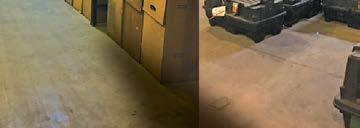


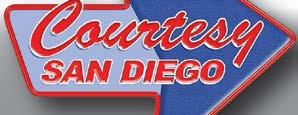




Equipment and tool suppliers, OEMs and other vendors gathered in Newport Beach, CA, in April for the Equipment and Tool Institute’s (ETI) annual ToolTech. The two-day event included presentations on industry trends, networking and the opportunity to meet one-on-one with OEM and aftermarket tool and equipment providers.
“ETI is committed to fostering collaboration between vehicle manufacturers and the providers of tools, equipment and service information,” said Brian Plott, ETI’s executive director. “Seeing the willingness of industry leaders to talk and understand each other’s needs, collaborate on new technologies, and really work together collectively on the direction of the industry makes it an exciting time for the industry.”
During the event, a significant milestone was announced: ETI is entering the European market and creating ETI EU, which will be headed by Winston Lee. Lee, managing director EU, is a long-time ETI member and strong participant.
“Many of our members are global companies, as are our OEM
partners,” noted Plott. This is a step in the direction of contributing to the growth of our membership and helping them clear the path for the industry for the long term.”
ETI also introduced its 2024-25 board members and named Bob Augustine, vp of sales and marketing for AAA Auto Glass & Electronics, president of the organization.
Since becoming involved with ETI in 2006, Augustine said the pace of technology is accelerating.
“We no longer have distinct vertical segments anymore because anyone who performs vehicle
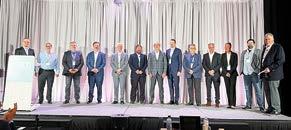
repair has to be service-ready on all aspects of the platform as soon as the vehicles are built,” he explained.
“OEM-approved tooling, training and service information are no longer a nice-to-have; they are requirements to properly complete a safe and complete repair for the motorist.”
On day one of the conference, Mike Spagnola, president and CEO of the Specialty Equipment Market Association (SEMA), provided an overview of SEMA. This included information about the SEMA Garage locations in Diamond Bar, CA, and Plymouth, MI.
Pete Bradley, head of international technical training at Hella-Gutmann in Germany, provided an international perspective on the automotive aftermarket industry. He shared insight on some of the challenges taking place regarding ADAS cybersecurity and data ownership.
Cybersecurity issues were shared by Kevin Tierney, vp of global cybersecurity for GM. Tierney discussed how the auto manufacturer is addressing cybersecurity issues and the importance of taking protective measures.
Augustine moderated an OEM panel that included David Stovall, Toyota; Ryan Hays, Ford, Terence Vance, Honda; Danny Uhls, Nissan; Bob Stewart, General Motors; Travis Taylor, Volkswagen/Audi; and Mike Porter, Hyundai.
Joshua Linton, Midtronics’ EV platform manager, talked about accurately testing and diagnosing EV
12-volt batteries. He explained that in a typical EV, a rectangular pack of individual lithium-ion batteries is located under the floor and powers the electric motor.
On day two, Dr. Shawn DuBravac shared insight about some of the forces defining the future of the auto sector. DuBravac said leaders must work on competing time horizons simultaneously.
Richard Ferguson, Toyota’s new markets manager, business development, fuel cells, shared information about fuel cell solutions. He discussed the Toyota Mirai, a fuel-cell electric vehicle (FCEV) that uses hydrogen gas rather than liquid gasoline.
Augustine then led a shop owners’ panel with Lucas Underwood, L&N Auto Repair and Changing the Industry Podcast; Gene Morill, Certified Automotive Specialists; Greg Buckley, Buckley’s Auto Care; and Lee Lizarraga, ABC Auto Care. The last presentation was given by Mark Seng, Predii’s vp of sales and business development, who discussed AI implications in the automotive service aftermarket.
For more information about ETI, visit www.etools.org.


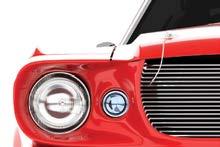
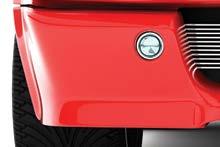
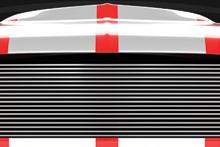
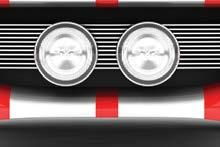


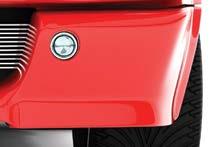

Car ADAS Solutions announced the opening of a new licensee location in Anaheim, CA, ProMax ADAS Solutions. Owner Art Cadena is proud to debut the 3,400-squarefoot facility dedicated to calibrations.
Ten months into becoming an auto technician, Cadena realized how important ADAS calibration is and will continue to be. After doing some research and contacting the Car ADAS team, he decided to open a calibration facility to help ensure the safety of drivers.
“My thought is that anyone, including customers, pedestrians and drivers, can be in danger of an accident if their ADAS is not properly calibrated,” Cadena said. “I want to provide safety for automobile drivers before any accidents occur.”
The Car ADAS team is excited to welcome Cadena and his new facility.
“We are confident that Cadena’s knowledge and expertise will make him an invaluable asset to the Anaheim area,” said Kevin Caruso, COO of Car ADAS Solutions. “He prides himself on providing quality
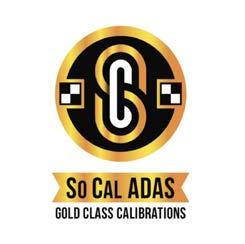

repairs and shares our vision of ‘Making the world a safer place to drive.’”
“The Anaheim area is filled with body shops that need calibration support,” said Cadena. “In the future, I’d like to expand to other cities in California. The more people we can reach and help, the safer our roads will be.”

The facility is equipped with the latest ADAS calibration equipment and technology. It will offer services for all major manufacturers and models. With a focus on safety, Cadena plans to hire and train technicians to ensure they are properly equipped to handle any ADAS calibration needs. Cadena added that his current facility is proud to also offer services
such as programming, module programming and wire harness/ wiring repair.
This being his first location, Cadena was looking for a partner who could provide the training and support needed to help him get his business started.
“The Car ADAS real estate team helped me to sort through the zoning regulations involved in opening a new facility in California,” Cadena said. “The sales support has also been tremendous; my background is not in sales, so having that help to get my facility up and running has been invaluable.”
Cadena was also impressed with the attention to detail and thorough training provided by Car ADAS Solutions. He noted the team goes above and beyond to make sure their partners are well-equipped to handle any ADAS calibration needs that come their way.
In the future, Cadena plans to open additional locations in California and continue to partner with Car ADAS Solutions. He wants to expand his reach and help more drivers by providing top-quality ADAS calibration services.



AirPro Diagnostics has entered into an agreement with Fix Network to supply its franchisees diagnostics and ADAS calibrations technologies.
This relationship is a significant milestone in AirPro Diagnostics’ commitment to delivering innovative diagnostic technology and solutions to the automotive collision repair and glass industries.
This agreement includes AirPro’s Auggie mobile ADAS forward-facing camera calibrations device for Fix Network’s collision, glass and mechanical brands. These brands include Fix Auto Collision Canada, Fix Auto Service, NOVUS Glass, ProColor Collision, Speedy Auto Service and Speedy Glass USA.
In addition, AirPro’s systems and equipment deliver to its current customer base a 99.6% service success rate, dramatic reduction in cycle time and comebacks, coverage on 98% of all vehicles (including 2024 models), quick response from a Brand Specialist tech on tool in less than two minutes, and a huge return on investment (ROI).

After its 2022 study of blend refinish labor times, which led all three estimating systems to reexamine their 50% formulas and add more flexibility to their systems related to blending, the Society of Collision Repair Specialists (SCRS) said it will embark on a similar approach to the topic of structural set-up and measure.
“We often hear from our members, just as we did with blends, that the historic approach to set-up and measure doesn’t reflect what current requirements of modern-day vehicles and modern-day equipment require,” Aaron Schulenburg, executive director of SCRS, said at the association’s open board meeting this spring in Seattle. “We will perform a study that analyzes both of those tasks, and find a way to communicate back to the industry.
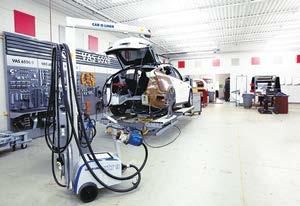
“I think a big difference between the blending project, where we had historical values established similarly by all three estimating systems, is that with the task of setting up a vehicle and measuring a vehicle, those times aren’t defined by any of the estimating systems,” Schulenburg said. “So we’ll be looking at it a little differently in how we produce our results. But I think it will have equal value to the collision repair centers out there who can then take that information and proceed forward.”
Returning to the blend issue, Schulenburg said SCRS has developed a document focused on addressing common questions about the changes in the CCC Intelligent Solutions estimating system related to its blend formula. For each of a dozen questions, the document includes a link to information from CCC or Motor Information Systems — which develops the database of labor times used in the CCC system — addressing the question.
“I’ve heard some people have
been challenged by someone saying, ‘Motor didn’t actually change anything,’ so we put that question in there,” Schulenburg said. “Did Motor Information Systems conduct research on the estimated work time development methodology for color blend adjacent panels? And there is a quote from Motor, saying throughout the first quarter of 2023, Motor reviewed information from multiple sources.”

Did Motor intend for the absence of a defined blend time to default to its prior formula? “Motor removed the previously published color blend formulas after determining they may not reflect the many variations encountered with modern vehicle finishes and designs,” the document quotes from Motor’s published response to a Database Enhancement Gateway (DEG) inquiry. “[Because of] these variations, Motor does not intend to publish a list of included or excluded items specific to color blend.”
How does Motor define a judgment time following an on-thespot evaluation? “A judgment time would be the outcome reached when an estimator or appraiser considers the specifics of the vehicle and repair or refinish operation being evaluated to determine the estimated work time,” Motor wrote in a response to a DEG inquiry.
Speaking at the meeting, Jeff Wildman of BASF said the document could prove helpful given what he’s seen related to shops adjusting what they charge for blending.
“I’ve done a couple presentations on it, and a lot of the shops out there seem like they’re just looking for an ‘Easy’ button,” Wildman said. “The information you put together, Aaron, really helps explain it, and I think shops are starting to get it, but they’re afraid to ask for more than
50%. When we talk to shops and ask them what’s happening, what they’re doing, most shops just say, ‘Well, I’m just asking for 50%,’ but the shops that are trying to do more, that are leveraging the information, they’re getting paid for it. But you have to try.”
Wildman also said BASF in April had State Farm representatives in its training center, blending panels.
“They’d been asking about the blend study, and I told them, ‘I can’t tell you how long it takes. Come in and do it,’” Wildman said. “So we had three people from State Farm doing twostage and three-stage blends, getting a feel for it to understand what’s really involved. They were there for a full day, eight hours spraying paint. So we’ll see what the outcome is, but people are looking into it.”
“If you come across an error, an omission, or inaccurate data, you can reach out to us through the website.”
Like Motor and CCC, Audatex also removed its blend formula and changed its guidance to say blend times vary and require a vehicle-byvehicle evaluation. Mitchell allows a user to adjust the blend formula in its system but did not change its guidance related to the formula of 50% of full panel refinish time.
Also during the SCRS meeting, Danny Gredinberg, the administrator of DEG, reported that better than half of the more than 500 inquiries submitted to DEG in the first quarter of the year resulted in a change to one of the estimating system databases by Audatex, CCC Intelligent Solutions or Mitchell. Those combined changes, he said, based on inquiries related to omissions or inaccurate information in the estimating systems, added 233 body labor hours, 70 refinish labor hours, and about $4,900 in parts pricing to the systems.
“Again, this is just in the first three months of this year,” Gredinberg said, adding that more than 22,000 such inquiries have been submitted since the DEG’s inception more than 15 years ago.
Gredinberg highlighted some of the recent inquiries. One (#36440)
questioned CCC’s labor time to replace a quarter panel on a 2023 Nissan Rogue; after review, CCC increased the labor time from 18 hours to 23 hours. Just out of curiosity, Gredinberg said, he contacted Nissan and learned that the automaker had sold 549 of those quarter panels just in one year.
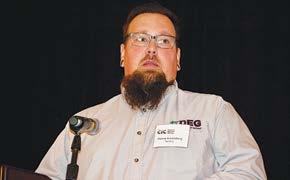
Another recent inquiry related to a Subaru Impreza quarter panel replacement caught Gredinberg’s eye, he said, because he’d submitted an inquiry on the same model of vehicle 11 years ago when working as an estimator. The time was increased back then, he said, and this year another five hours were added to the labor time in CCC. Subaru told him about 1,650 of the quarter panels have been sold since 2013. Inquiries sometimes result in more than just changes to the estimating databases, Gredinberg said. One inquiry (#35949) noted the Mitchell estimating system lacked a labor time for the full replacement of the uniside on the 2024 Chevrolet Trax. Gredinberg found General Motors had no published procedure for that operation, but the automaker developed one within about 10 days of being contacted. That procedure was submitted to Mitchell, who used it to establish a labor time of 23.9 hours — so the inquiry resulted in both an entry in the estimating database and a published OEM procedure.
“If you come across an error, an omission or inaccurate data, you can reach out to us through the website,” Gredinberg said, noting the DEG website also includes other tools like the P-pages or guides to the three major estimating systems, and many of the automakers’ electronic parts catalogs. “We’ve got to speak up. We’ve got to submit these inquiries. Because at the end of the day, we just want to get paid fairly for the work that we’re doing.”

specifics, and hypotheticals, with alleged MVR deviations ranging from about $4,000 to $12,000 per event.
The complaint also called “California Repair Facilities and Body Shops” a group that could be harmed if vehicles are improperly totaled instead of repaired.
If true, this would also contribute to ongoing trends of fewer and costlier, more complicated repairs, paired with more totaled vehicles, from insurance-related body shop and collision work, as well as more lawsuits.
Joe Messina sees the repair vs. totaling trend bundle as owner of Roseleno Inc., a body shop in Fullerton, CA.
The first is driven partly by safety and liability concerns, advanced body design and construction technology.
“I have friends who work at the BMW training facility in Ontario (CA) and have taken tours there,” he said. “You’ve got safety crash zones to protect the driver from turning into a cannoli. They’re using specific bonding methods, carbon fibers … and if it’s not [fixed] to factory specs,
Autel announced its tablets have been approved for Nissan Central Gateway (CGW) access via AutoAuth, the aftermarket tool OEauthentication service, enabling registered users to access secured systems and perform complete diagnostics on select late-model Nissans.
By registering their shop and tablet at AutoAuth, Autel users can perform diagnostics and service tasks such as clearing codes, bidirectional controls, Active Tests, Special Functions and ADAS calibration on security gateway-equipped Nissan vehicles. As Stellantis did previously, Nissan implemented its security gateway to prevent unauthorized access to the vehicle network.
Nissan vehicles currently included in this coverage are 2020 and newer Sentras, 2022 and newer Pathfinders, and 2021 and newer Rogues.
Autel users should visit AutoAuth. com to create an account and register their shop and Autel tool. There’s a $50 annual charge per shop. It includes five tools and five users. The tablet must have an active Autel subscription and be WiFi enabled.
the body shop and people will be liable.”
Aluminum body panels have been cited as another example of the difficulty of repairing vehicles.
Insurers are unlikely to pay for such repairs.
“You take it to BMW [yourself] or you write it off,” Messina said.
on a May earnings call, citing CCC data, “total loss frequency for the first calendar quarter 2024 was 21.1%” — 1.5 percentage points higher, yearover-year.
An outlier, of course, is the always higher cost of new cars, raising total loss thresholds and chances of repair.
Residents can also file suit directly, even in small claims court. The California Department of Insurance (CDI) can take administrative and regulatory action. As a result, many insurers — including Progressive, a defendant in the Alameda County lawsuit — have scaled back operations in the state.
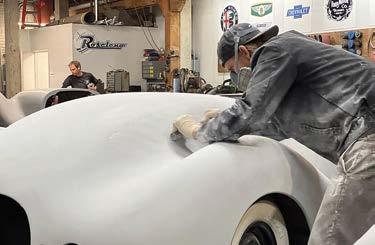
Totaling “is a way safer bet for the insurance company and I don’t blame them,” he added.
The concern is the “runaway train” of repairs. Even apparently innocuous events can trigger insurers’ fear.
“Hit the tire on a curb, they’re going to be worried about the suspension. So they’ll say ‘here’s a check, go get a new vehicle,’” Messina said.
Copart Inc. CEO Jeff Liaw said
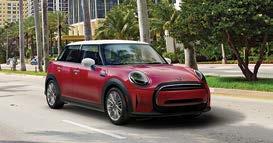
5202 Kearny Mesa Road
Diego, CA 92111 858-650-4411
858-380-2811 Fax
7am-6pm Sat 8am-1pm jnavarro@penskeautomotive.com aramirez@penskeautomotive.com website: www.miniofsandiego.com
Jack Molodanof, an attorney and lobbyist working with the California Autobody Association, had seen news of the lawsuit but “hasn’t heard anything from members” about it.
And the Alameda action is only the latest in a long line of legal and administrative actions related to valuing totaled vehicles in California and other states, involving many of the largest U.S. insurance companies. Illinois legislators recently passed a law to boost transparency on total loss transactions. Washington state, New York and Texas have seen “total loss” suits in recent years. California is seen as ground zero on auto insurance issues, including price gouging and delayed investigations.
Insurers operate under the state’s “Good Faith” insurance strictures.
Price through a spokesperson declined direct comment on the legal action. USAA, Progressive and Mitchell didn’t return requests for comment. CCC declined a request. A request for CDI comment wasn’t returned. USAA gave statements on the litigation to outlets in Texas, where it’s based, saying the suit lacks merit and its valuations are fair.
The case, “People of the State of California v Asi Select Auto Ins. Corp., et al,” Case No. 24CV073476, was filed April 29 in Alameda County Superior Court and assigned to Hon. Noël Wise, according to court watcher Trellis Law. Asi Select Auto Ins. Corp. is one of the named units of Progressive Corp. Deputy District Attorney Alexandra Graynor is prosecuting. No attorneys were listed at press time for defendants.
A hearing June 4 was set to consider if the case qualifies as “complex” under California court rules, with a case management conference to follow on Aug. 27.
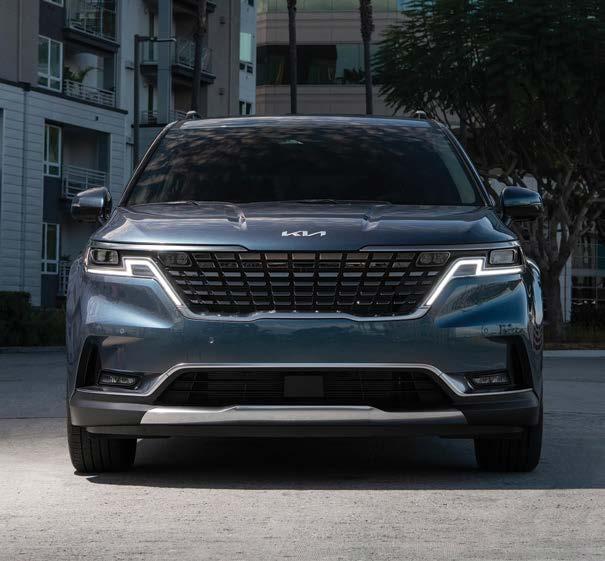

Scott VanHulle, manager of I-CAR’s Repairability Technical Support and OEM Technical Relations, thinks the type of laser welding automakers use in assembly factories may make its way into collision repair shops and could be “a game changer” in the industry. One reason: improved affordability of the equipment.
“You’re using mirrors and lenses to focus that laser beam into an extremely
uses electrons to heat the material, laser welding involves photons, he said.
“You’re using mirrors and lenses to focus that laser beam into an extremely small, tight area,” VanHulle said. “It’s an intense heat in that area, but it’s an extremely small area. And it can pretty much weld everything: steel, stainless steel, aluminum, copper, brass, nickel alloys, dissimilar metals, even different kinds of plastic. There is even some talk about certain kinds of ceramics that can be laser welded.”
Because it doesn’t require a filler wire, it doesn’t introduce different
VanHulle said.
“With laser welding, that gun that looks like a traditional MIG welding gun has mirrors and lenses in it that can get smudged or damaged. It’s not a quick swap out of a contact tip,” he said. “You’ve kind of damaged a very expensive part of that tool.”
Laser welding also involves some of the same kinds of hazards as traditional welding, including fumes.
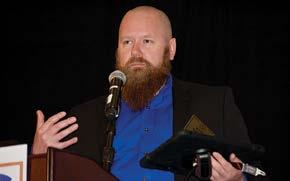
if you’re welding and you’re getting reflection off of something, it could actually burn a hole in the helmet.”
Specialty safety glasses are needed as well to protect from more than just sparks and debris.
“If the laser reflects off something and it hits your eye, it’s not like welders flash that feels like you have sand behind your eyes but will eventually get better,” he said. “This does permanent, irreversible damage to your eyes if you’re not wearing safety glasses that are rated for it.”
That’s one of the reasons when laser welding is done during the vehicle manufacturing process, the car moves into an area that is then closed off during welding so no one
Fusor High Definition Plus sprayable sealers are innovative one-component seam sealers designed for the precise duplication of OEM beaded sealers, wheelhouse coatings and sound deadening materials.
Skins in 25 minutes or less
“We may have to have something like the aluminum clean rooms if we’re laser welding, that can be locked off so other staff can’t walk
These challenges aside, VanHulle said, the laser welding process has a “substantially lower” learning curve
“I’m not saying we’re going to start laser welding tomorrow,” VanHulle said. “But it’s something we’re definitely going to have to keep an

Option to paint immediately or up to 30 days after application
Reduces cycle time
Achieves a perfect match with OEM appearance

As EVs gain market share, auto body shops across the U.S. must consider if and how they will prepare for repairing them.
Kelly Logan, director of collision repair programs at EV maker Rivian, and Kris Burton, owner of Rosslyn Auto Body and a board member with the Society of Collision Repair Specialists (SCRS), stopped by Autobody News’ The Collision Vision podcast, hosted by Cole Strandberg, to share their insights on how body shops can take full advantage of the opportunities EV repair creates.
Strandberg asked Logan about the safety considerations involved in EV repair.
Logan said EV-specific training is critical to make sure technicians have the necessary skills and the information to be able to work on them safely. For instance, highvoltage gloves need to be checked regularly for pinholes, because an electrical short can jump through.
Rivian offers hands-on, instructorled training for technicians who will be working on the vehicles, and online training for everyone who works in a repair shop in any role. “If there’s a vehicle that has a battery pack out or has the front end tore

Logan said Rivian has a network of certified collision centers, but recently launched a new program to bring on third-party, independent service providers to work on the electric delivery vans it is building for Amazon.
Burton said his shop, which is located in Alexandria, VA, near Washington, D.C., started working on its Tesla certification in 2014. It now has that, as well as its Rivian certification.
“I think you’ve got to come into [repairing EVs] open minded, facility wise, tooling wise and then tech wise,” Burton said.
Logan, who has worked for two other EV startups before Rivian, including Tesla, said EV makers are looking for collision repair shops that are “open to growing with us, looking at training requirements and tooling requirements.” He said Rivian tries to ensure shops are only buying special tools they absolutely need to repair their vehicles.
to physically inspect it or do pressure checks to make sure there is no internal damage.
Strandberg asked Burton about how he made the decision to begin pursuing Tesla certification in 2014.
“It was an opportunity for us to be on the forefront, and especially in our region, here in the D.C. area,” Burton said. “There’s a lot of EVs on the road. It was really an opportunity for us to to help our business grow.”
Burton said new tooling is not just an upfront cost, it’s an ongoing one as well. For instance, certain welders have a specific lifespan. Training also requires an ongoing investment, including travel expenses to attend in-person classes, as vehicles continue to evolve.
Logan said he does not see ICE vehicles becoming extinct, at least not in his lifetime. It will be up to shops on an individual basis to decide which certifications make the most sense to pursue, but the need to specialize could also drive opportunities.
to take your business in the future,” Logan said. “There’s programs out there that are not as strenuous, and that’s OK. And then there’s programs like...Rivian. We have a lot of things to it. There’s standards, there’s tooling, there’s a lot of investment. There’s training commitments.
“I don’t think every certification, every OEM even fits our model. I don’t think you can be everything to anybody anymore.”
“So you can look at maybe dipping your toes into the water with with other programs, if it makes sense for your business,” Logan said. “Or you can just jump right in, like [Burton] has done in the past, and get involved with it.”
apart and there’s high voltage lines exposed, it’s really good just to have everybody in the building on the same page as far as safety,” Logan said.
Compared to ICE vehicles, EVs have much fewer moving parts, Logan said, but their high-voltage battery packs contain many modules, each holding thousands of individual battery cells. Repairers will never be asked by an OEM to fix a battery pack; if there’s an issue with it, it will be replaced. But OEMs do have different instructions for when and how to remove the pack to complete other procedures.
“In the future, as EVs become more mainstream, maybe you’ll have battery repair centers,” Logan said.
Logan said Rivian has a support team for its certified collision network, that looks at batteries in damaged vehicles on a case-by-case basis, to determine if dents or scratches on the case are allowable, or if the pack needs to be replaced. Sometimes that can be done by photos; other times, a technician from Rivian needs
“When you really get good at repairing one vehicle or a particular brand of vehicle, your whole shop gets comfortable. Your technicians get comfortable with how these vehicles are put together and how the repair procedures are laid out, and how how you write an accurate estimate. It really does help your overall business,” Logan said.
Burton said his shop mostly only fixes vehicles for which it has certifications now. “It’s five, six brands of cars that we repair,” he said. “And we’ve got it down pretty well to how to move forward with those.”
He also said he has five apprentices in his shop now, all between 18 and 20 years old, and if the shop had more space, it could probably bring in more.
“I think the the narrative that kids don’t want to do [collision repair] is incorrect,” he said. “I think a lot of kids do want to do this, but they want to be in a place where they’re supported and where they’re free to learn and where they can make mistakes and improve and grow.”
Logan said shops should research OEMs’ certification requirements to determine which ones make sense to pursue. Some won’t fit a shop’s particular business model.
“It’s looking at where do you want
“I don’t think every shop is for certifications,” Burton added. “I think you really need to pick. I don’t think every certification, every OEM even fits our model. I don’t think you can be everything to anybody anymore.”
Logan said Rivian has an online application for shops interested in becoming certified to work on their vehicles. As Rivian’s vehicle population has grown — doubling in the past two years — so too has interest in being able to fix them. The EV maker carefully considers which shops to work with, based on where their customers are located.
“We want to make sure that the shops in our programs are successful,” Logan said. “And so overloading the network with too many shops in markets can actually backfire where nobody’s getting a return on their investment.
“Sometimes we get shops that are frustrated; they really are excited. They want to be on the network,” Logan added. “We just want to make sure that they understand if you spend all this money and got brought on to the program, and you didn’t see any vehicles, then you’d be upset.”
Return on investment is key, Strandberg said, as there is a cost to getting certified that takes both time and money.
“Lastly, specialization,” Strandberg said. “That’s something both Kelly and Chris spent a ton of time on. If you want to make sure a certification offers you a good ROI, especially one for EVs, consider specializing if the market’s right. If your talent’s right.”




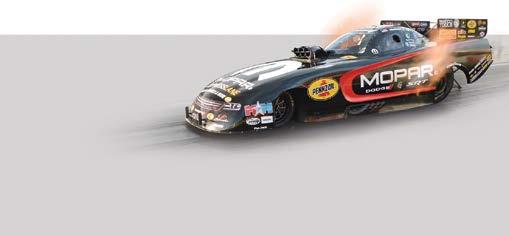

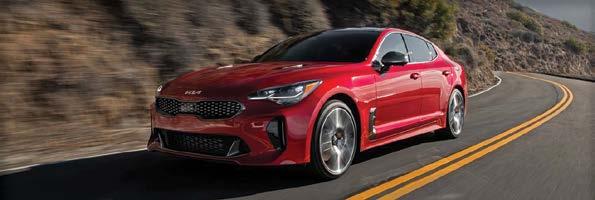

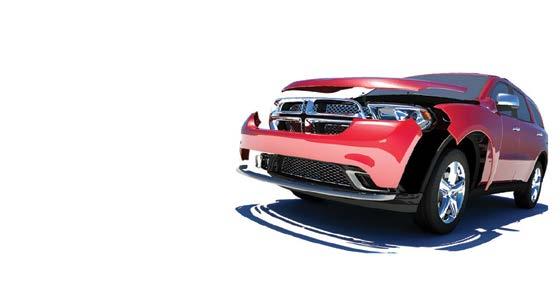






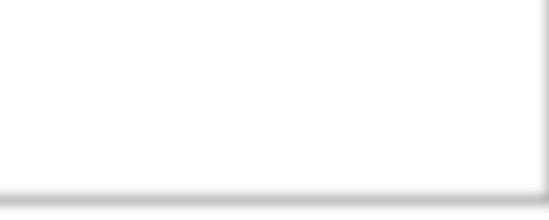




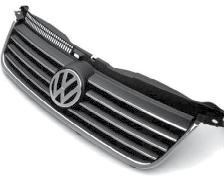


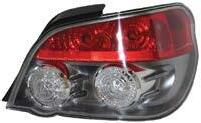




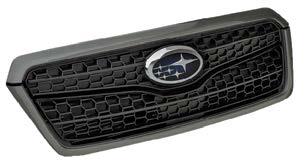




With an increasing number of newcar buyers paying a premium ranging from $1,000 to $17,000 or more for a matte or semi-gloss finish, they’re likely to be even more attuned to any refinishing done to that vehicle following auto body work. The Collision Industry Conference’s Parts and Materials Committee paint representatives at this spring’s CIC, held in Seattle, offered tips for successfully matching the look and gloss of these finishes.
Bradley Letourneau, a trainer with BASF, said most automakers view the finishes as custom.

“So it’s not like a manufacturer will measure gloss unit and say, ‘OK, in order for it to be a frozen finish or a piano finish, it has to be within a certain amount of gloss,’” Letourneau said. “They kind of take a look at it, and as long as there are no big runs, dust or dirt in it, it goes to the lot and it gets sold. So because there are no industry standards, these are viewed as custom. You should expect to see a lot of variation within the sheen.”
He said he teaches refinishers the sheen will impact the color a lot more than the color will impact the sheen.
“Time and time again, I see painters doing their first matte finish think that their color is wrong when it’s not,” he said. “It’s actually the sheen that they need to adjust to get that proper match. Typically, if we have a bad color match, we can blend that color out so the customer can’t see it. With a matte vehicle, we’re not blending clear coat. We have to do a panel match. There is no option to blend that clear out to transition it into what is currently on the vehicle. So matching of the sheen is always done by panel match.” He shared photos showing how three panels, each with the same
color, appeared different based on whether a matte, semi-gloss or medium gloss clear was applied, as well as how two panels with the same color appeared different based on whether one coat or two of the same matte clear was applied.
Painters must consider which method and process to use, Letourneau said.
“Both can work, but if you’re going to choose just one coat of clear, you must understand how that’s going to impact the color and the shade of the vehicle,” he added.
Letourneau said it’s also important to view the matte finish from the correct angle.
“All too often, you’ll see a technician look at it at from a 90-degree angle,” Letourneau said. “This isn’t going to a give you an accurate representation of the sheen. The best way to view these is from between a 5-degree and a 15-degree angle. Especially with your test panel. When you’re placing it against the panel you’re trying to match, view it at a 15- or 5-degree angle.”
He said creating multiple test panels and documenting all the variables for each — spray gun and tip size, clear coat used, flash time, humidity, bake time and temperature — is even more critical with matte finishes than with traditional gloss finishes.
“If you alter any of those variables, you’re going to get a different result,” Letourneau said. “Polishing or wet sanding is impossible, so you’ve got one chance to do this correctly.”
He said he and trainers from other paint companies went to the BMW training center in New Jersey several years ago, and they each sprayed a test panel with the same variables.
“We all used the same gun, the same clear coat, the same hardener,
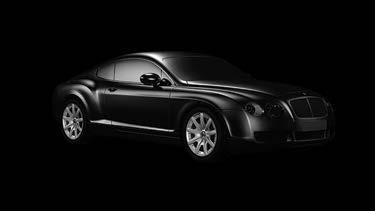
the same everything,” he said. “So every variable was controlled.”
Still, there was significant variation among the test panels, showing that even how a painter sprays can make a difference in the appearance of a matte finish. The manufacturers’ approved products and mil thickness have to be noted, he said. The use of
a gloss meter can cut back “quite a bit” on preparation time.
“And here’s where sometimes I get into some arguments with some shops or insurance companies: always refinish two or more panels,” Letourneau said. “Usually it’s best to
“It’s
paint the whole side because, again, we are panel matching the sheen. We can’t blend the sheen out. So in order to minimize variation and increase the odds of success, paint the whole side.”
Improper washing of vehicles with a matte finish is the primary reason a warranty gets voided, he said, so make sure to use the manufacturer’s recommended products and process for detailing the vehicle after it is refinished.
“I’m not trying to scare anyone off,” Letourneau said of matte refinishing. “It’s like anything else: these are actually pretty simple to do once
you’ve done a handful of them. It’s really all about preparation.”
The committee’s presentation seemed to reassure attendees about matte finishes rather than scaring them off. At the start of the session, a poll of CIC attendees found 21% of shops said they likely wouldn’t accept a matte finish job, and another 16% were “on the fence” about it; asked again at the end of the session, just 3% were still on the fence and the percentage who said they wouldn’t accept a matte finish job was down to just 13%.
California shop owner Kye Yeung went a step further and said shops “almost have to have” a gloss meter to refinish matte vehicles successfully. The meters use three cameras to measure the gloss on a scale of 1 to 100, he said, and “can differentiate the amount of gloss that the human eye can’t detect.” They can be as much as $5,000.
“But we’ve done some research, and [found one] from eBay that was $400,” Yeung said. “We found that it was pretty consistent, that there was really no difference [between the two] because we’re not sending people to the moon, we’re just painting vehicles.”








California is on the verge of potentially mandating all new cars alert drivers when they exceed the speed limit. This proposed legislation aims to significantly reduce traffic fatalities and could influence automotive standards across the U.S.
The bill is an amended version of the legislation state Sen. Scott Wiener, a Democrat from San Francisco, first introduced in January, that would have electronically limited the speed of the vehicle if it exceeded 10 mph over the speed limit. Gov. Gavin Newsom had vetoed a similar bill in 2019.
The amended bill proposes that by 2032, all new cars sold in California must notify drivers if they are driving at least 10 mph over the speed limit.
It passed its first vote in the state Senate on May 21 by a count of 2213.
“Research has shown that this does have an impact in getting people to slow down, particularly since some people don’t realize how fast that their car is going,” said Wiener.
The intelligent speed assistance technology relies on GPS to compare a vehicle’s speed with posted speed limits. If a car exceeds the limit by 10 mph, the system emits a brief visual and audio signal to alert the driver. However, this system may face challenges due to
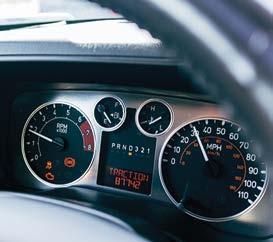
incomplete datasets of local roads and recent changes in speed limits.
Despite the bill’s passage in the Senate, it faces considerable opposition. Republican state Sen. Brian Dahle argued, “It’s just a nanny state that we’re causing here,” noting there are emergency situations where driving faster than
the speed limit is necessary.
The implications of this legislation extend beyond California due to the state’s significant influence on national automotive policies. Historically, California has set stringent emission standards and influenced other states and automakers to follow suit. If this bill becomes law, it is likely car manufacturers will implement the technology nationwide to comply with California’s requirements.
The National Highway Traffic Safety Administration (NHTSA) reported 10% of all car crashes in 2021 were related to speeding, with an 8% increase in speedingrelated fatalities. In California, 35% of traffic deaths were due to speeding, the second highest in the country. The National Transportation Safety Board (NTSB) has also recommended federal regulations for speed alerts in new cars, following a tragic crash in 2022 caused by a driver traveling over 100 mph, resulting in nine deaths.
Auto Additive launched its new business, providing 3D printing solutions to the automotive repair industry, at the IBIS Global event in Greece.
Auto Additive and its founding partners HP, Headlights.com & 4Plastic, are set to revolutionize the supply of 3D printed tools, jigs and repair parts such as headlight tabs. The weldable and attachable repair tab kits will be available for sale exclusively through Headlights.com.
Auto Additive is collaborating closely with key industry stakeholders in 3D printing, including HP and Forcast 3D. The business is also leveraging advanced blockchain-driven software to deliver cutting-edge solutions that meet the highest quality standards in the aftermarket and OEM sectors. Auto Additive is set to offer a range of services to meet the growing industry needs in the collision sector, including building custom parts catalogues, 3D printing and managing existing digital parts, engineering custom tooling, and working on tailored projects.

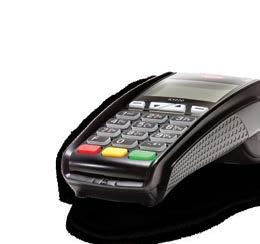


One of the things we’ve been tracking in our 20 Groups, the Spartans, are average sales produced per month per body tech and paint tech. A lot of people talk about measuring technician efficiencies, but I prefer to monitor the average sales produced per person.
is $55,000 a month for each of the five people working in the body department.
Today, we see shops averaging about $65,000 to $75,000 in gross sales per person in the body department. Sure, there are some outliers, those with an average far below that, and some north of $100,000 per person in the body department. But when you exclude those high and low outliers, the average is in that $65,000 to $75,000 range.
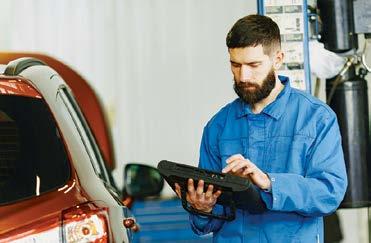
In the body department, for example, I would say the average shop prior to COVID had monthly gross sales of between $55,000 and $65,000 per body tech. If a shop had gross monthly sales of $275,000 produced by three body techs and two body apprentices, the average
So what if you’re not hitting that average? I would bet it’s because of one or more of the following reasons.
1. Estimate quality. There are likely labor operations your techs are performing that aren’t being included on estimates or final invoices.
2. Administrative bottlenecks. Your technicians could produce more, but they’re waiting for an admin person to write an estimate or supplement, so they’re not making
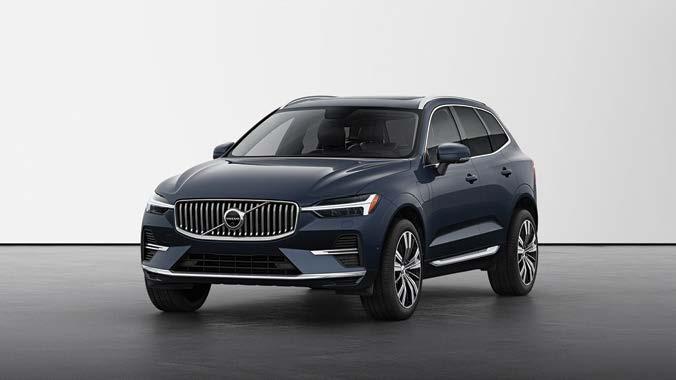
the most of their time. Or the techs might be performing some of the administrative functions — checking in their own parts, for example — because the shop is running lean on admin staff. It’s important to understand what that’s costing you. If your shop is making 45% gross profit (unloaded) on the $75,000 a technician is producing in a month, take that $33,750 and divide it by the 160 hours the technician works in the month. Having that body tech checking in his own parts is costing you about $211 per hour in lost potential gross profit.
3. Skill sets or training. Maybe you have a lot of entry-level apprentices. Your average sales per tech may be low in the short-term, but it’s a little pain for the longer-term gain. But also think about what training you can get techs — from I-CAR, 3M or BETAG, etc.— to boost their productivity.
4. Overstaffing. I’ve seen some shops be overstaffed at times ahead of opening another shop location, or because of some upcoming staff retirements. But those should
be shorter-term issues rather than chronic overstaffing.
5. Scheduling. A low average could also be a sign you’re not scheduling in the right mix of work based on the skill sets of your techs.
6. Pay plans. Could your pay plan improve how incentivized your team is to produce? Again, pay plans vary based on shop leadership and culture, but it can contribute to monthly sales produced per technician.
These are the most common reasons I see why shops’ numbers per tech aren’t keeping up with the industry, but there certainly are other potential nuances as well. A high average gross sales per body technician could be inflated by a lot of PDR work after a hailstorm, for example. It could be affected by techs staying late to work, or coming in early or on weekends. A high labor rate, or a mix of work that includes a lot of high-end vehicles, will affect your average. So it’s important to look for all the contributing factors like these when tracking your average gross sales per person.
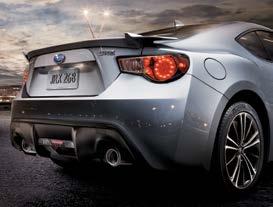
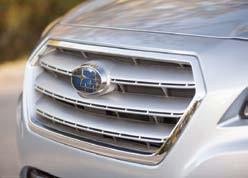
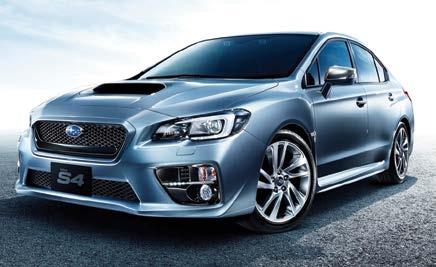






operational in Colorado and Montana, with plans for further expansion.
FNAP is the first automotive glass apprenticeship in the U.S. Duran learned of this opportunity through TC Futures, a nonprofit organization focused on transforming the futures of youth and young adults through access to equitable and holistic services.
“I was living couch to couch, trying to finish my GED, when I connected with TC Futures to find a trade opportunity,” said Duran. “They introduced me to this opportunity with Speedy Glass USA, which perfectly fits my interest in working with cars and trucks. Thanks to the training and support provided through FNAP, I am now a certified auto glass technician, and I’m confident I have a bright future in this industry.”
“Gabe is one of the hardest workers we’ve ever had at Speedy Glass Kennewick, and that’s high praise when you consider the strength of our current team,” said Jennifer Curbow, performance compliance and implementation manager of Speedy Glass. “We’ve
enjoyed watching him learn and grow and are pleased to celebrate his graduation from the apprenticeship. We look forward to what his position at Speedy Glass Kennewick holds for him.”
“Before joining the apprenticeship program, I became a dad,” said Duran. “This was big for me, and I wanted to make sure I could provide for my family. Skilled trades, such as auto glass repair and replacement, allow you to not only support yourself and your family but also to support the community you call home. The opportunities for growth and advancement are motivating.”
FNAP contributes to the local economy by training skilled technicians capable of meeting the growing demand in the auto glass industry. Apprentices undergo a minimum of 2,000 hours of paid on-the-job training, supplemented by classroom sessions, online learning and participation in industry conferences.
The comprehensive curriculum covers everything from windshield repair to ADAS calibration, ensuring graduates like Duran are wellprepared to meet industry standards and pass the certified technician standardized test by the Auto Glass Safety Council (AGSC).
The Steve Marshall Group recently purchased Orchid Isle Auto Center in Hilo and KailuaKona, HI, from Joe Hanley, announced Performance Brokerage Services, the dealership brokerage firm that advised on the sale.
Orchid Isle Auto Center has been family-owned and operated for more than 40 years, operating two Ford dealerships, one on the west side of the Big Island of Hawaii and another on the east side.
Steve Marshall Group is a Canadian automotive retailer founded in 1966 in Campbell River, British Columbia. Founder and President Steve Marshall opened his first Ford dealership when he was 19. The Steve Marshall Group now operates 11 dealership locations across Canada and the U.S.
Orchid Isle Auto Center will remain at its current locations at 1030 Kanoelehua Ave. in Hilo and 76-6319 Kuakini Hwy. in Kona.

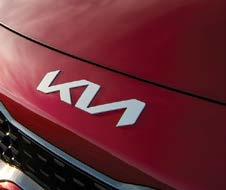
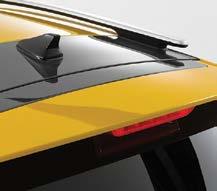
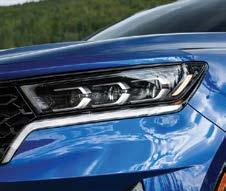
Over the last five years, Performance Brokerage Services has advised on the sale of more than 300 dealerships, making it the highest volume dealership brokerage firm in North America. Jason Stopnitzky, co-founder of Performance Brokerage Services, and Rob Armstrong, senior partner of the Canadian headquarters, were the exclusive advisors for this transaction.
“We would like to thank Joe Hanley for putting his faith in us to guide him through the sale of Orchid Isle Auto Center,” said Stopnitzky. “I have known Joe for many years and have always appreciated his values and commitment to his team and his community. It was a pleasure to facilitate this transaction and work alongside such consummate professionals. We wish the Steve Marshall Group much success with the acquisition and congratulate them on their breakthrough into the U.S. market.”
Unlock savings and precision fit with genuine parts

• Save time and money: reduce returns by up to 16%
• Faster ordering process
• More accurate orders
• Easier invoice processing
• Live information
• Seamless fit
• Competitive pricing
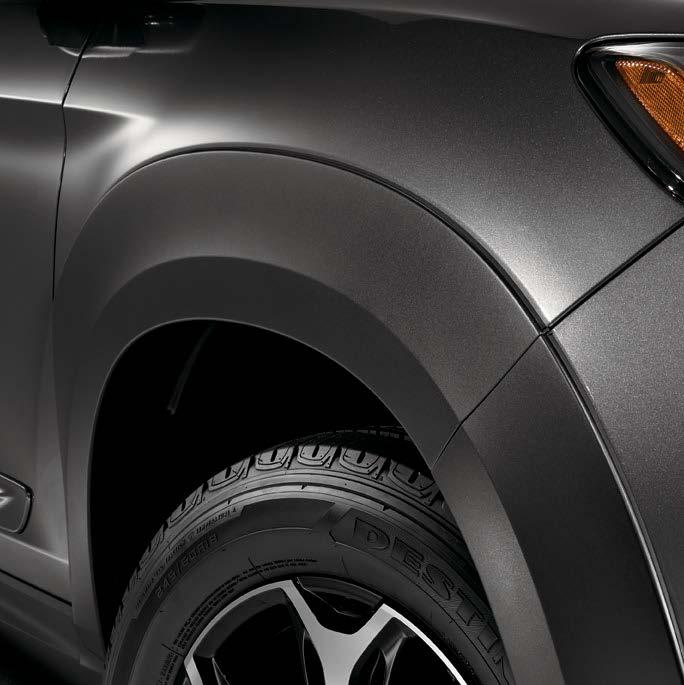
Please contact these dealers for your Honda
Barber Honda
Bakersfield
661-396-4235
Dept Hours: M-F 8-5:30 bestchoice@barberhonda com
Capitol Honda
San Jose
408-445-4412
Dept Hours: Mon-Sat 7:30-6; Sun 8-5 sbettencourt@penskeautomotive com
Concord Honda
Concord
925-825-8016
Dept Hours: M-F 8-6 kevin valenzuela@concordhonda com
Galpin Honda
Mission Hills
800-GO GALPIN
818-778-2005
Dept Hours: M-F 7:30-6; Sat 8-2 mteeman@galpin com
Honda of El Cajon El Cajon
619-440-5851
Dept Hours: M-F 7-6; Sat 7-5 parts@hondaofelcajon com
Honda of Hollywood Hollywood
800-371-3719
323-466-3205
Dept Hours: M-F 8-6 parts@hondaofhollywood com
ACURA
Acura of Concord Concord
925-680-4233
Dept Hours: Mon-Sat 7-6 keith�whisten@cacargroup�com
Acura of Fremont Fremont
888-435-0504
510-431-2560
Dept Hours: M-F 8-6; Sat 8-5 mike ohare@acuraoffremont com
Acura of Pleasanton Pleasanton
888-985-6342
925-251-7126
Dept Hours: M-F 7:30-6; Sat 8-6 mitch cash@hendrickauto com
Honda of Pasadena Pasadena
800-433-0676
626-683-5880
Dept Hours: M-F 8-6; Sat 8-4
Honda of the Desert Cathedral City 760-770-0828
Dept Hours: M-F 7-6; Sat 7-5 mpartridge@honda111 com
Keyes Honda Van Nuys
818-756-6549
Dept Hours: M-F 8-6; Sat 8-5 malvarez@keyeshonda com
Larry Hopkins Honda Sunnyvale 408-720-0221
408-736-2608
Dept� Hours: M-Sat 8-5 parts1@hopkinsdirect com
Metro Honda Montclair 800-446-5697
909-625-8960
Dept Hours: M-F 7:30-5:30; Sat 7:30-4 wholesaleparts@metrohonda�com
Pacific Honda San Diego 858-565-9402 jgardiner@pacifichonda com
310-784-8664
310-539-3636
Dept Hours: M-F 7-7; Sat 8-5 alvaradow1@autonation com
Bakersfield Acura
Bakersfield
661-381-2600
Dept Hours: M-F 7:30-5:30 bakersfieldacuraservice@yahoo com
Marin Acura
Corte Madera
800-77-Acura
415-927-5350
Dept Hours: M-F 8-5:30; Sat 8-4 parts@marinacura com
San Francisco Honda San Francisco 415-913-5125
Dept Hours: M-F 8-5 partsws@sfhonda com
Scott Robinson Honda Torrance 310-371-8320
Dept Hours: M-F 7-6:30; Sat 7-5 mluna@scottrobinson com
Selma Honda
Selma
800-717-3562
559-891-5111
Dept Hours: M-F 7-6; Sat 7:30-4:30 hondapartsmgr@selmaautomall com
Larry H. Miller Honda Boise
888-941-2218
208-947-6060
Dept Hours: M-F 7-6; Sat 8-5
Hinshaw’s Honda Auburn 253-288-1069
Dept Hours: M-F 7-6; Sat 7:30-4:30 rickb@hinshaws com
McCurley Integrity
Honda
Richland
800-456-6257
509-547-7924
Dept Hours: M-F 8-5:30; Sat 8-4 hondaparts@mccurley net
South Tacoma Honda
Tacoma
888-497-2410
253-474-7541
Dept Hours: M-F 7:30-6; Sat 8-5 bgregory@southtacomahonda com
Metro Acura Montclair
800-446-5697
909-625-8960
Dept Hours: M-F 7:30-5:30 wholesaleparts@metrohonda com
Acura of Honolulu Honolulu
808-942-4557
Dept Hours: M-F 8-5; Sat 8-4 RayleenGarcia@lithia com
Hinshaw’s Acura Fife
253-926-3331
Dept Hours: M-F 7-6; Sat 8-5 johnny@hinshaws�com
overestimations and the subsequent need for manufacturers to adjust production strategies. Challenges remain, particularly the higher cost of EVs compared to their combustion engine counterparts and the limited availability of affordable options below the $27,000 mark in Western markets. Additionally, the development and maintenance of charging infrastructure are critical to consumer adoption.
Looking forward, the demand for EVs is expected to remain strong, driven by impending bans on combustion engines and the ongoing need for cleaner transportation options. The IDTechEx report forecasts global electric car sales to exceed 50 million by 2035, up from more than 18 million in 2024.
General Motors, for instance, is revising its EV production targets for 2024, reducing its goal from an initial range of 200,000 to 300,000 units to 200,000 to 250,000 units, as reported by the Detroit Free Press.
GM CFO Paul Jacobson
Industry Conference, emphasizing the company still aims to achieve variable profit in the EV segment by the end of the year. “We think we can still do that in, probably Q4 more than the second half,” Jacobson said.
Jacobson said the adjustment is “100% demand-driven,” despite overcoming previous supplyside challenges such as battery module issues. He noted GM sold approximately 9,500 EVs in May. The revised production targets are part of a cautious approach to avoid excess inventory and deep discounting, aligning production with market demand.
Additionally, GM is investing $850 million in its self-driving car subsidiary, Cruise, to support its relaunch.
Jacobson also reported GM ended the first quarter with a healthy 63 days of inventory, slightly reduced to 59 days by the end of May. The automaker anticipates a robust second quarter, projecting performance that will surpass the first quarter’s adjusted pre-tax income of nearly $4 billion.
Ford announced June 13 it is ending its “EV-certified” dealership program, which required significant financial
the electric vehicle (EV) market.
The program, launched in September 2022, required dealers to invest between $500,000 and $1.2 million to sell and service EVs. Initially, Ford had set a June 30 deadline for dealers to install Level 2 EV charging stations.
However, despite initial optimism and high demand for all-electric vehicles, sales have not met expectations. Ford’s dealership investment requirements were relaxed last November, reducing the number of mandatory Level 2 chargers and removing a future obligation for Level 3 fast chargers by 2026. Then, more recently, the automaker said it was temporarily suspending the requirements as it recalibrated its strategy.
“The world has changed,” said Marin Gjaja, COO of Ford’s Model E electric vehicle business, during a media briefing June 13. “The growth has slowed down.”
The Model E Dealership Program included about half of Ford’s 2,800 U.S. dealers but faced resistance and lawsuits from some participants due to the high investment requirements. In light of the changing market conditions and feedback from dealers, Ford has decided to “sunset” the program.
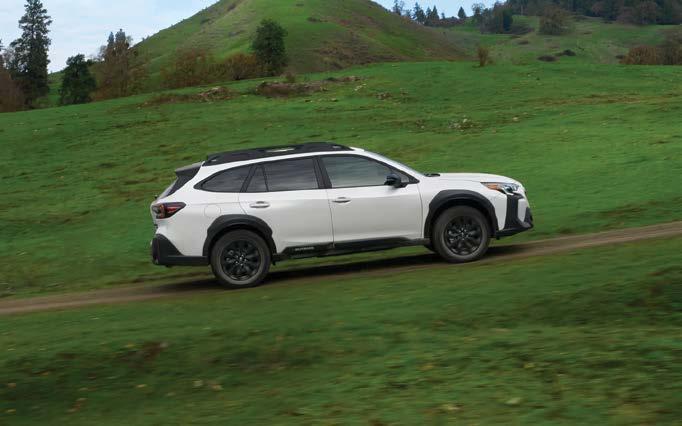
The following dealerships are eager to serve your needs. Call your local Subaru collision parts specialist today!


Instead, Ford will now open EV
sales and service opportunities to all of its dealers, aiming to boost sales of its all-electric cars and trucks. Dealers will still need to invest in charging infrastructure, training, and other EVrelated expenses, but the required investments will be significantly lower than those mandated by the previous program.
“It allows us to open EV sales and service to more dealers,” Gjaja said. “We think it’s going to help us grow our sales.”
Gjaja noted the initial investment estimates for the program were high, with participating dealers investing about $600,000 on average. By reducing the financial burden on dealers, Ford hopes to make EV sales more accessible and increase overall market penetration.
Ford also delayed the launch of a new three-row all-electric SUV by two years and reduced training requirements for dealership employees.
Nissan Motor Co. is also reshaping its approach to EVs in the U.S., prioritizing crossover SUVs over sedans in response to consumer preferences, as first reported by Automotive News. The Japanese automaker announced the adjustment of its EV lineup to better align with current
Subaru of San Bernardino San Bernardino (909) 888-8686 (909) 571-5483 Fax Mon.-Fri. 7:30-7; Sat 7:30-5 parts@subarusb.com www.sbsubaru.com
Santa Cruz Subaru Santa Cruz (888) 844-7131 (831) 420-1402 (831) 420-1923 Fax Mon.-Fri. 7:30-6; Sat. 8-5 parts@santacruzsubaru.com www.santacruzsubaru.com
Kendall Subaru of Marysville Marysville
Parts Hotline (866) 662-2819 (360) 716-2553 24 Hr Fax Mon.-Fri. 7-6; Sat. 8-4:30 wholesaleparts@kendallauto.com scotteney@kendallauto.com www.kendallsubarumarysville.com
market demands, introducing five new models while pausing the development of two battery-powered sedans.
The announcement is part of Nissan’s broader effort to adapt to a softer-than-expected demand for EVs. “We are adjusting the timeline for the introduction of these five new models to ensure we bring the vehicles to the market at the right time,” a company spokesperson explained.
The revised lineup includes several battery-powered crossover SUVs, which are expected to roll out more swiftly than the planned sedans. Nissan’s manufacturing facility in Canton, MS, will play a crucial role in supporting the production of these next-generation vehicles.
The announcement is a modification of Nissan’s March plans, which aimed to accelerate the EV transition with seven new models by 2026 and establish a robust EV manufacturing hub in the U.S. However, the current shift in strategy indicates a more cautious approach in a market that has shown a lukewarm reception to electric vehicles compared to hybrids and traditional gas-powered models.
Access to Tesla’s Supercharger
network for several brands adopting the North American Charging Standard (NACS) has been delayed due to recent layoffs at Tesla.
General Motors, Polestar and Volvo were poised to gain access to Tesla’s extensive Supercharger network in North America, which includes 15,000 stalls. This expansion was expected to significantly enhance charging availability for EV drivers across the U.S. and Canada. However, Tesla’s decision to lay off numerous Supercharger team members, including Senior Director of Charging Infrastructure Rebecca Tinucci, impacted this timeline.
A Polestar representative stated their timeline “had been adjusted to later this summer.” Similarly, General Motors has delayed the anticipated purchase of its NACS adapter, which is essential for their EVs to connect to Tesla Superchargers.
Ford and GM executives presented divergent strategies for hybrid vehicles at a recent industry conference, as reported by Reuters.
Ford CEO Jim Farley argued hybrids should not be seen merely as a transitional technology on the path to full electrification. “We should stop talking about it as transitional

Audi Part Professionals are experts on collision parts, replacement components and mechanical items.
technology,” Farley said. “Many of our hybrids in the U.S. are now more profitable than their non-hybrid equivalent.”
Farley emphasized the profitability and relevance of hybrid vehicles, noting that extended-range hybrids are vital for the industry’s future. He mentioned Ford’s plans to quadruple hybrid sales over the next several years and acknowledged the company’s recent adjustments to its EV investment strategy. This includes pulling back on some EV investments and delaying production in Canada and the U.S.
Conversely, GM CEO Mary Barra views hybrids as a temporary solution, with the ultimate goal being a fully electric fleet. “It’s not the end game because it’s not zero emission,” Barra said. She added GM plans to introduce plug-in hybrids by 2027 to meet regulatory requirements but is primarily focused on advancing EV technology.
Ford is balancing its investments between hybrid and electric technologies, aiming for profitability in the hybrid segment while refining its EV strategy. Farley also expressed a belief that EVs should not rely on subsidies and that automakers must quickly achieve profitable production of battery-powered models.
In contrast, GM is doubling down
Audi Rocklin
Rocklin
866.948.0048
916.836.1286
916.836.1293 Fax
on its commitment to EVs, seeking to maintain competitiveness against Chinese automakers, who Barra acknowledges as formidable rivals. “I take the Chinese competitors, especially the top ones, very seriously. We’ve got to continue to take cost out so we can compete successfully,” Barra said.
Kia EV9 Debuts in Georgia as U.S. EV Sales Surge Kia, on the other hand, announced it has begun production of its first allelectric three-row SUV, the EV9, at its assembly plant in West Point, GA.
The 2025 Kia EV9 has already garnered multiple accolades, including the prestigious “Best of the Best” Red Dot award in April 2024 for the Cars and Motorcycle category, and several “Best in Class” titles from the Texas Auto Writers Association, including Performance SUV, mid-size CUV, and electric vehicle.
The Kia EV9 contributed heavily to the automaker’s 151% increase in EV sales in the U.S., said Eric Watson, vice president of sales operations at Kia America.
“Through Plan S, Kia is poised to be a leader in the e-mobility sector for years to come,” said SeungKyu (Sean) Yoon, president and CEO of Kia North America and Kia America. “EV9 will be in excellent hands with Order Audi Genuine Parts from these select dealers.
Audi Seattle
Seattle
206.634.8200
206.547.1581 Fax
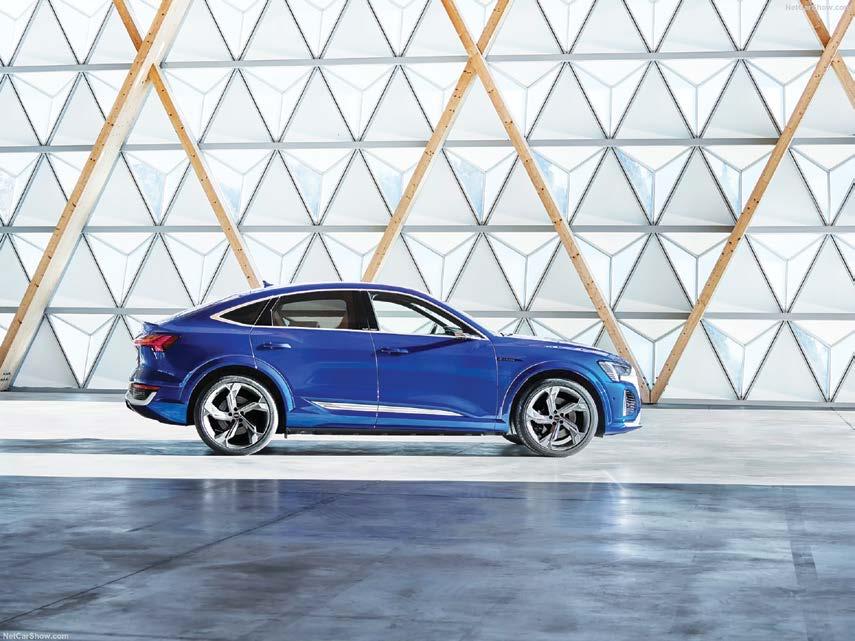
M-F 7:30am-6pm Sat 8am-5pm parts@audirocklin.com
Niello Audi
Sacramento
916-480-2851
916.483.1963 Fax
M-S 8am-5pm audi.parts@niello.com www.audi.niello.com
Santa Monica Audi
Santa Monica
310.481.8216
310.393.6982 Fax
M-F 7:30am-5pm wholesale@santamonicaaudi.com www.santamonicaaudi.com
M-F 7am-6pm parts@uvwaudi.com www.audiseattle.com
Regardless of the age of your customer’s Audi, Audi dealers have access to over 200,000 part numbers and are supported by a nationwide network of distribution centers to help ensure non-stocked parts are delivered the next day.
the team members at Kia Georgia, and their track record for assembling award-winning, world-renowned products speaks for itself.”
Rivian decided to halt work on its second manufacturing facility in Georgia, but announced it will use $827 million in incentives from Illinois to bolster production capacity at its existing plant in Normal.
Originally intending to begin producing its forthcoming R2 vehicles in Georgia, Rivian said it will save $2.25 billion on capital expenditures, product development investment and supplier sourcing opportunities by producing it in Illinois to start. It will also be to launch the R2 earlier.
The incentives package, spanning 30 years, predominantly comprises tax benefits under the Reimagining Energy and Vehicles in Illinois program, along with an additional $75 million in capital funding under a separate state initiative.
According to a statement from the governor’s office, Rivian intends to invest $1.5 billion to elevate its plant’s capacity in Normal to 215,000 units annually from the current 150,000. This expansion project is projected to generate over
550 jobs within the next five years, a welcome development for the local economy.
Rivian also announced the second generation of its flagship vehicles, the R1S SUV and R1T pickup, featuring substantial improvements in power, performance and technology.
The second-generation R1 platform offers new tri- and quadmotor configurations, and new battery packs offering up to an estimated 420 miles of range.
Significant advancements in the new R1 vehicles include a redesigned electrical architecture, which reduces the number of electronic control units (ECUs) from 17 to seven, and an entirely new autonomy system called the Rivian Autonomy Platform. This system enhances vehicle capabilities with 11 cameras, five radars and AI prediction technology, offering features like high-resolution camera Blind Spot Monitoring and Highway Assist as standard.
Starting at $75,900 for the R1S and $69,900 for the R1T, the vehicles are now available for order on Rivian’s website.
A single mother serving in the U.S. Navy in San Diego was handed the keys to a much-needed vehicle, a fully refurbished 2022 Toyota Corolla, courtesy of the National Auto Body Council (NABC) Recycled Rides program, in collaboration with car donor USAA and repair partner Fix Auto Collision Poway.
Olusola Smith, the recipient, is an active duty sailor and a single mother of two who has struggled with transportation since her car was wrecked. She has been relying on friends for lifts to carry out her family responsibilities and get to work. The gift of the car will now enable her to independently manage essential tasks like grocery shopping, attending parent-teacher organization meetings, and ferrying her children to school. Smith was nominated for the donation by STEP, Support the Enlisted Project.
“This gift means the world to me,” said Smith. “It means that I can provide for my children. I will
be able to contribute to a better quality of life for not only my children but for myself.”
The NABC Recycled Rides program is an initiative where members from various sectors of the collision repair industry unite to repair and donate vehicles to individuals and families needing reliable transportation. Since its beginning in 2007, the program has donated more than 3,300 vehicles, valued at approximately $47 million.
The car was presented to Smith in a ceremony attended by representatives from USAA, Fix Auto Collision Poway and other partners, including Cars for Charity and Advanced Remarketing Services.

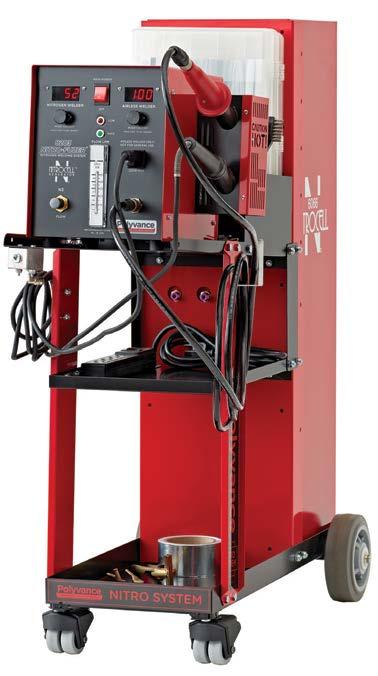
A dozen Southern California residents were arrested May 9 for allegedly participating in a scheme to defraud auto insurance companies out of more than $350,000.
The Inland Empire Automobile Insurance Task Force, which led the investigation, said the suspects — part of a larger 15-member fraud ring — were all charged with insurance fraud, grand theft by trick, and false impersonation.
The task force began its investigation in November 2022 after discovering Rosa Isela Santistevan, a non-sworn employee of the California Highway Patrol (CHP), was unlawfully selling traffic collision report face pages containing personal information of collision victims. Santistevan, 55, of Irvine, CA, is accused of printing and selling thousands of these reports to the ring’s ringleader, Andre Angelo Reyes, 36, of Corona, CA.
Reyes allegedly provided these reports to Esmeralda Parga, 26, of Pomona, CA, who would then contact collision victims under the guise of being from their insurance
company. Parga coordinated the towing of these vehicles to CA Collision, a repair center owned by Anthony Gomez, 35, of Jurupa Valley, CA. Once at CA Collision, the vehicles were held hostage, with the fraudsters demanding cash payments from insurance companies for their release.
The investigation, which involved the California Highway Patrol, San Bernardino County District Attorney’s Office and Riverside County District Attorney’s Office, revealed the ring was also engaged in orchestrating collusive collisions. Evidence included a video showing the intentional crashing of a BMW sedan into a Polaris Slingshot, with defendants then falsely claiming two separate freeway accidents.
In addition to Santistevan, Reyes, Parga and Gomez, those arrested include: Ezequiel Baltazar Orozco, 30, Antonio Terrazas Perez Jr., 19, Erika Garcia, 31, and Antonio Ramirez Perez, 44, all of Los Angeles; Israel Avila Sandoval, 45, and Ricardo Parga Jr., 23, of Pomona; Luis Alberto Ramirez Jr., 32, of San Bernardino; Robert
Arzac, 49, of West Covina; Brian Anthony Lopez, 25, of Anaheim; Emily Marie Boatman, 26, of Ontario; and Steven Anthony Alfaro, 38, of Buena Park.
The San Bernardino County District Attorney’s Office will prosecute the case. The task force seized more than 3,500 CHP traffic collision report face pages and uncovered significant evidence during numerous search warrants, leading to the arrests and charges.


Dynabrade Power Tools announced its partnership with Juncos Hollinger Racing Team as its official tool sponsor, starting at the 108th Running of the Indianapolis 500 Presented by Gainbridge. Dynabrade is committed to supporting the racing community with high-performance power tools, giving Junco Hollinger Racing a competitive edge by leveraging the power of the innovative equipment throughout the 2024 season.
The partnership will see Dynabrade’s branding prominently displayed on Junco Hollinger Racing’s channels throughout the racing season.
“When our team back at the factory requested new tools, we took it a step further, looking to fully integrate a future-forward pioneer in the abrasive tool space,” said David O’Neill, team principal of Juncos Hollinger Racing. “JHR has developed an impressive talent pipeline, and now the team can perform at their best with the most innovative tools on the market in hand.”
“Dynabrade is excited to be an official partner of Juncos Hollinger Race Team in 2024,” said Mike Saraf, VP of global sales at Dynabrade.
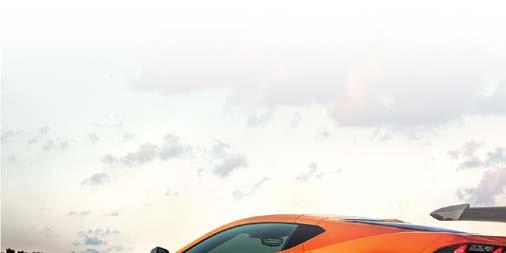


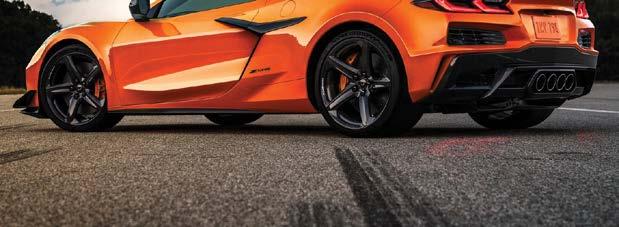
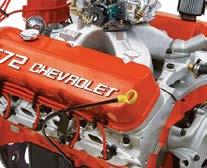


As vehicles continue to grow larger, heavier and faster, accident severity is increasing, but the wider availability of ADAS features like automatic emergency braking (AEB) is showing an effect on accident frequency
That is according to Kay Wakeman, a research analyst with the Insurance Institute for Highway Safety (IIHS) and Highway Loss Data Institute (HLDI), who spoke about vehicle fleet trends and how they will affect collision repair during the 2024 Women’s Industry Network (WIN) Annual Conference, held in May in Newport Beach, CA.
which affects the median (overall average) and mean (middle number, when placed in order.)
“Claims severity is a really complicated issue,” Wakeman said. “Yes, there’s a cost of calibration associated with these systems, but there’s also this element that the types of claims that are still happening look different than what we’re used to.”
In the early 1980s, the car was king, a small percentage of people drove pickup trucks and no one drove an SUV, Wakeman said. As of 2022, 50% of the vehicles sold in the U.S. are SUVs. Pickup trucks have

Wakeman said the average age of vehicles on the road in the U.S. today has grown to 12 years old, meaning it will take a while for the effects of technology like ADAS features, currently widely available only on newer models, to be reflected in crash data.
As of 2022, about 20% of U.S. vehicles have AEB. Wakeman said it will likely take until 2045 to 2050 before 95% of the U.S. vehicle fleet has the technology, which, it was recently announced, will be a standard feature on all new light-duty passenger vehicles by 2029.
“These things are going to become more and more prevalent, so as you’re thinking about the future at your shops and the types of vehicles you’re going to be repairing, know that this is coming,” Wakeman said.
Adding ADAS to vehicles has proven to drive down the frequency of accident claims, but it increases the average severity, Wakeman said.
Part of that is due to “mean shifting.” ADAS systems that work at low speeds help prevent a lot of “lowdollar” claims, like those in parking lots, removing them from the data set. That leaves higher-dollar claims as the larger share of the entire set,
expensive to purchase and repair, which can impact severity.
Shifting to pickup trucks, small pickups’ popularity hit a low in 2014, but have rebounded recently, helped by Ford bringing back its Ranger and introducing the smaller Maverick. However, larger models, like the Ford F-150, still have the largest chunk of the market.
In 1981, most trucks had a twodoor cab. Today, more than 90% have a four-door cab, which are much bigger and heavier than the twodoor version, adding more mass and weight to crashes.
Looking at SUVs, most sold are small or mid-size, as many of the mini and large models have been phased out, similar to cars.
In the 1980s, there was no such thing as a luxury SUV, but they now make up nearly 20% of the SUVs sold, Wakeman said.
And while truck owners seem to be concentrated in certain parts of the country, SUV owners are everywhere. “For the most part, SUVs are all over,” Wakeman said.
Horsepower is where “things have absolutely skyrocketed” over the
last 40 years, Wakeman said — it has tripled for pickup trucks and doubled for SUVs and cars.
“We now have vehicles capable of going faster while weighing more than they ever have before,” she said. “That’s leading to much more force in a crash.”
In 1999, the highest-powered vehicle in the HLDI vehicle database was the Ferrari 550 Maranello, which had 478 hp and cost $220,000. There were only 239 in the database.
Fast forward to 2019, and that same amount of power was available for $47,000 in a Ford Mustang Bullitt. A Chevy Camaro with a slightly lower rating of 455 horsepower only cost $27,000. There were 2,500 and 6,000 of each, respectively, in the database.
“Horsepower has become a lot more affordable for the average person,” Wakeman said.
Research shows people drive faster as their vehicles become more powerful. More concerning is data showing the biggest increases in speeding have happened on roads rated at 40 to 45 mph — meaning people are driving faster on neighborhood roads, which pedestrians and cyclists are also using.
maintained their presence in the fleet, but cars have been on a steady decline.
Vehicle specs have also changed a lot in the last 40 years, Wakeman said.
Weight has gone up for all vehicle types, but especially for pickup trucks. There has also been an increase in length for most vehicles other than cars.
More vehicles sold today have four-wheel drive, making them weigh more and cost more to repair, Wakeman said.
Looking at cars, most sold today are small or mid-size, as micro and very large cars have been phased out.
The size of the vehicle really matters, Wakeman said. She showed a video of a crash test in which a Smart car and a Mercedes-Benz C-class crashed headon. The Smart car crumpled, and the test dummy in the driver’s seat hit its head on the car’s A-pillar, “most likely a fatal hit,” she said.
“Remember, that’s a Mercedes C-class,” Wakeman said. “That’s not a Ford F-150; that’s a small car. So you can imagine just how much more devastating it can be.”
Luxury and sports cars have doubled in popularity over the last 40 years, Wakeman said, which are more
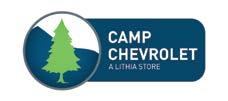
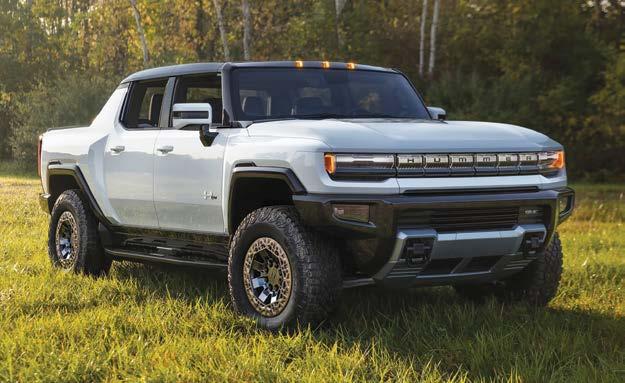


California has introduced new legislation to expedite the home and auto insurance rate filing approval process, requiring the California Department of Insurance (CDI) to respond within 120 days. This measure aims to stabilize the market as insurers increasingly pull back from the wildfire-prone state, Insurance Journal reported.
The proposed legislation, backed by California Gov. Gavin Newsom, mandates the CDI to respond to rate requests within 120 days, with an additional provision for rate hikes averaging over 7%. This expedited process is seen as crucial for maintaining market stability amidst rising home insurance rates and shrinking availability.
The American Property Casualty Insurance Association (APCIA) has favored changing Prop 103 for years, and the group believes streamlining approvals is key to addressing the California insurance crisis.
“Streamlining the rate review process will help increase consumer access to coverage by ensuring rates adequately
reflect risk and consumer claims — especially in the wake of rapidly changing conditions,” said Denni Ritter, department vice president for state government relations for the APCIA. “Year-long delays in the rate approval process have created a significant market imbalance — forcing more than half of the state’s top 15 insurers to restrict new policies or exit out of the market entirely.”
However, the proposal has faced criticism from consumer advocacy groups. Consumer Watchdog expressed concerns the changes would undermine independent public scrutiny of insurance rate increases.
“The governor’s plan invites insurance companies to set their own prices and will kill public participation in rate review,” said Carmen Balber, executive director of Consumer Watchdog. “It takes away the Insurance Commissioner’s ability to make insurance companies justify their charges and turns the Department of Insurance into a rubber-stamp for rate increases. It guts the public intervenor process and will cost
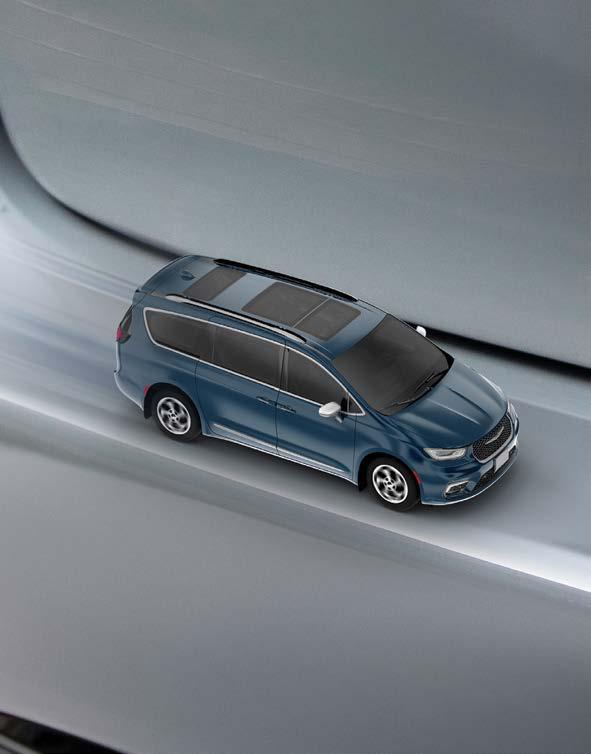
insurance consumers billions in savings from future public rate challenges. It’s up to the legislature to fix it.”
The urgency for reform has been underscored by recent actions from major insurers. Last May, State Farm announced it would stop accepting new policy applications for property/casualty insurance in California, citing increased risks from wildfires and inflation. More recently, State Farm revealed plans to non-renew 30,000 homeowners, rental dwelling and other property insurance policies in the state.

In-Person Training
Hunter Engineering introduced Hunter University, its new global learning platform designed for easily accessible training for customers, technicians, technical school instructors, students and any other interested parties.
The platform collects all of Hunter’s extensive learning content in a single place, offering dozens of free online courses worldwide, as well as streamlined registration for hands-on, inperson courses at training centers around the U.S.
All existing content was updated and refreshed as part of the ninemonth effort, often converting from PowerPoint presentations to shorter, easy-to-understand dynamic modules with narration and video. The online courses are generally presented in five-minute segments, so even a 10-module course could be completed in approximately one hour. The online courses are accessible internationally and available in 21 languages.
For more information, visit www.hunter.com/training.
The Collision Repair Education Foundation (CREF) announced more than $235,000 in scholarships and tool grants have been awarded to 90 students nationwide, funded through the generosity of industry partners.
For the first time, more than twothirds of the recipients are women and minorities, signifying a move towards a more diverse and inclusive workforce.
“CREF is honored to recognize these outstanding students through the 2024 scholarships and tool grants,” said Melissa Marscin, director of operations and administration for CREF. “We were thrilled to receive applications from a greater diversity of students than we’ve ever seen in the past, all of whom have demonstrated their commitment to pursuing their educations and becoming part of the collision industry. We hope these awards help contribute to their successful careers, strengthening the industry by bringing in new perspectives.”
Seven students received the prestigious Adelmann Family
Scholarships, each worth $10,000. These scholarships, established by retired industry veteran Tim Adelmann, aim to support students at a higher level and leave a lasting impact on the industry.
3M awarded $40,000 in scholarships and tool grants through two separate initiatives. The Hire Our Heroes grants are open to collision repair students who currently serve, or recently served, in the U.S. military; this year, 11 veterans received grants of $1,500 each. An additional 10 students received $2,500 CREF scholarships.
The Women’s Industry Network (WIN) collaborated with CREF to administer 30 scholarships specifically for women aspiring to enter the collision repair industry. These awards included tool kits valued at $500 and tuition scholarships of $500 or $2,500.
The PPG Foundation funded more than $30,000 in scholarships and tool kits, including $3,000 scholarships for seven students with a special interest in the painting segment of the collision repair industry.
LKQ donated $10,000 toward scholarships and tool grants in 2024, benefiting eight students.
Four outstanding students received $2,500 scholarships from the JW Bagley Foundation, a nonindustry entity that supports CREF’s mission.
Three more students recieved a CCC Michael Salvatore Repair Technician Scholarship, valued at $3,000 each.
Erie Insurance donated $8,000, which CREF awarded to four students — a $2,000 tool kit for one, and $2,000 scholarships for three more.
The Enterprise Holdings Foundation, the philanthropic arm of Enterprise Holdings, funded a $5,000 scholarship for one student.
I-CAR’s Lon Baudoux Memorial Scholarship was created to honor Baudoux, an I-CAR development manager who passed away in 2008, in recognition of the importance he placed on secondary and post-secondary collision repair students receiving a proper education. Two students received scholarships of $2,000.
AASP-IL funded $2,000 scholarships to assist with two students’ tuition costs, the CREF Board of Trustees awarded two $1,000 tool grants, and one student received a $1,000 tool kit through the Sulkala Family Scholarship, created to honor Chuck Sulkala, founder and executive director of the National Auto Body Council (NABC), who retired in 2018.
Finally, one student received the second annual $1,000 Jeff Silver Memorial Scholarship, established in 2022 to honor the memory of Silver, a respected trailblazer and leader in industry repair standards.
This year’s recipients come from a wide range of educational institutions across the country. More than one-third of the recipients identify as female, and nearly half reported a race other than Caucasian. A quarter of the students who received support in 2024 listed their race as Hispanic or Latino. The diversity seen among this year’s applicants can largely be attributed to CREF’s collaboration with WIN to administer its annual scholarships.
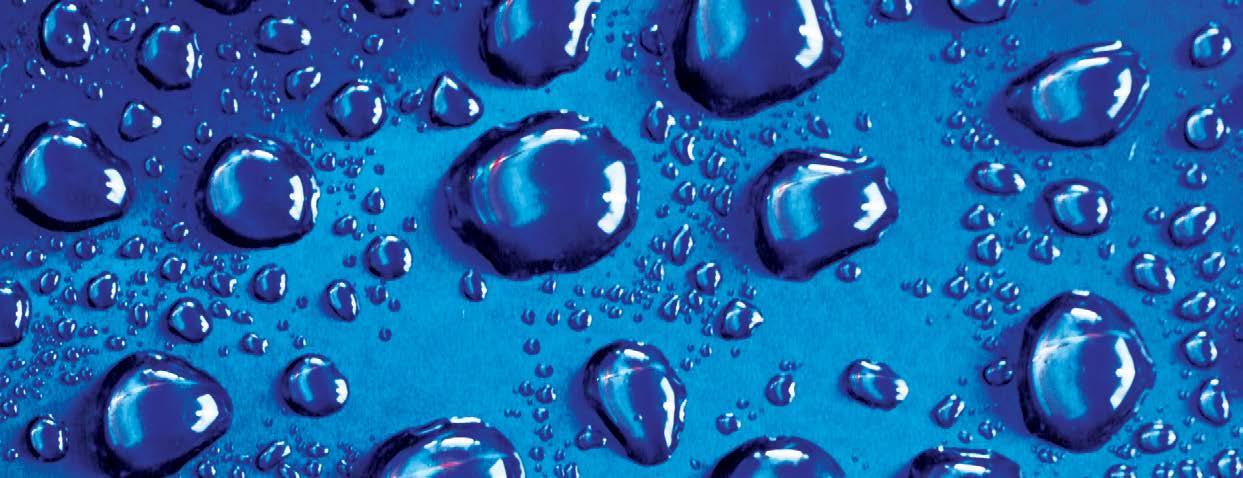


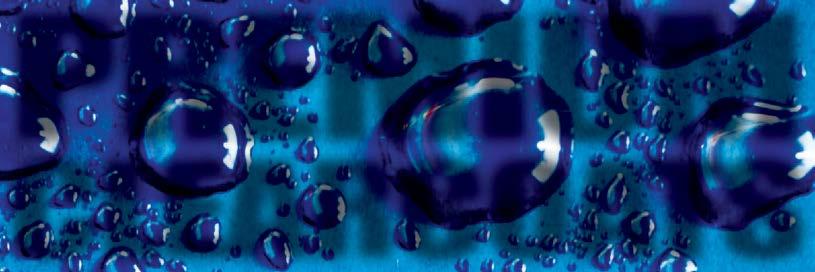




















Quality Collision Group (QCG) has appointed Eric Newell as chief revenue officer (CRO), effective May 30.
Newell joined QCG in October 2022 as vice president of operations and was promoted to regional VP of operations in early 2024. In his new role as CRO, Newell will oversee all revenuegenerating processes across the rapidly expanding company.
Originally from the Chicagoland area, Newell has been a key figure in the collision repair industry since 2012, with a focus on vehicle diagnostics and safety system calibrations. His expertise has significantly contributed to the development of Quality Calibration Centers (QCC), a new initiative within QCG’s portfolio.
“It’s satisfying to play an intricate role in developing strategies both operationally and financially to remain competitive and profitable. I’m looking forward to the exciting opportunities ahead at QCG,” Newell said.
New-vehicle prices in the U.S. continued to decline for the eighth month in a row, according to Kelley Blue Book’s latest estimates. The average transaction price (ATP) for a new vehicle in May was $48,389, a slight decrease of 0.9% from the previous year, largely due to increased inventory levels and higher incentives.
Higher inventory levels have significantly influenced the pricing dynamics in the automotive market. As of early May, newvehicle inventory reached 2.84 million units, marking a 51% yearover-year increase and the highest level since late 2020. This surge in inventory has provided consumers with more choices and prompted dealers to offer better deals.
“In May, we saw some positive news on the sales front,” said Erin Keating, executive analyst for Cox Automotive. “A lot of those sales gains were juiced by higher incentives and lower prices, which is good news for consumers worrying about inflation. While there are a lot of vehicles transacting at very high prices, that doesn’t mean all new vehicles
are unaffordable. There are still plenty of excellent, well-priced vehicles out there, particularly in the compact segments.”
The average new-vehicle incentive package in May was 6.7% of the ATP, translating to about $3,200 per vehicle, an increase from last year’s 4.0% of ATP, making new vehicles more affordable.
Despite the overall decline in new-vehicle prices, the market remains diverse with significant price variations across different segments. Four of the top 10 bestselling vehicles in the U.S. were fullsize pickup trucks, such as the Ford F-Series and Chevrolet Silverado, with ATPs exceeding $60,000. Conversely, popular models like the Toyota RAV4 and Honda CR-V had transaction prices well below the national average, at $37,608 and $37,364, respectively.
“It’s called an average for a reason,” said Keating. “The U.S. market is very diverse, with plenty of popular, high-priced vehicles that sell very well and drive the average higher. The popularity of fully loaded, full-size pickup trucks


that are more luxurious than many luxury vehicles is unique to the U.S. market. The Ford F-Series outsold BMW 2-to-1 in May, and BMW’s ATP was only marginally higher than the F-Series.”
Last month, the share of vehicles transacting below $40,000 increased compared to May 2023, suggesting a market shifting to more affordable models. Vehicles transacting below $40,000 accounted for 41.2% of new-vehicle sales in May, up from 36.8% one year ago. Kelley Blue Book counted approximately 70 different models available for below $40,000. Only one model with meaningful sales volume — the Mitsubishi Mirage — transacted below $20,000.
The electric vehicle market also experienced price fluctuations. Tesla’s ATP rose by 3.1% month over month to $57,369 in May, driven in part by the increasing sales of the Cybertruck — an estimated 3,000 were sold in May, at an ATP of $108,667. Overall, EV prices in May were 2.6% higher than in April, although they were 4.1% lower year over year.
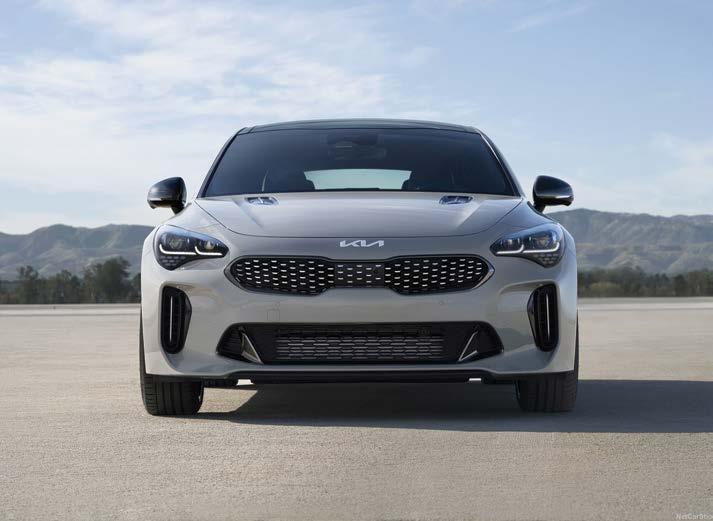

Mitchell, an Enlyte company, released its “Plugged-In: EV Collision Insights” report for the first quarter of 2024. The report showed a rise in electric vehicle (EV) total loss frequency in both the U.S. and Canada, attributed to a decline in prices for used EVs.
The data showed the total loss rates for EVs in the U.S. and Canada reached 9.93% and 7.48%, respectively. This marks an increase of approximately 8% from Q4 2023 and 30% from Q3 2023. Despite this surge, the EV total loss frequency is still comparable to newer internal combustion engine (ICE) vehicles, which recorded a rate of 9.51% in the U.S. and 7.44% in Canada.
EV repairable claims frequency also rose, to 2.26% in the U.S. and 3.41% in Canada, an increase of approximately 40% and 38% respectively over Q1 2023.
“Slowing new sales, manufacturer
However, it is also increasing for new gasoline-powered vehicles, which are comparable to EVs in terms of their complexity and cost to repair.”
vehicle at $48,759.
That same rapid move towards price parity, however, also resulted in weakened consumer confidence in the financial viability of used EVs, with prices falling by more than 30% year over year versus a 3.6% decline for used ICE vehicles.

Tesla price reductions in late 2023 spurred precipitous price drops throughout the EV segment. As a result, price parity between EVs
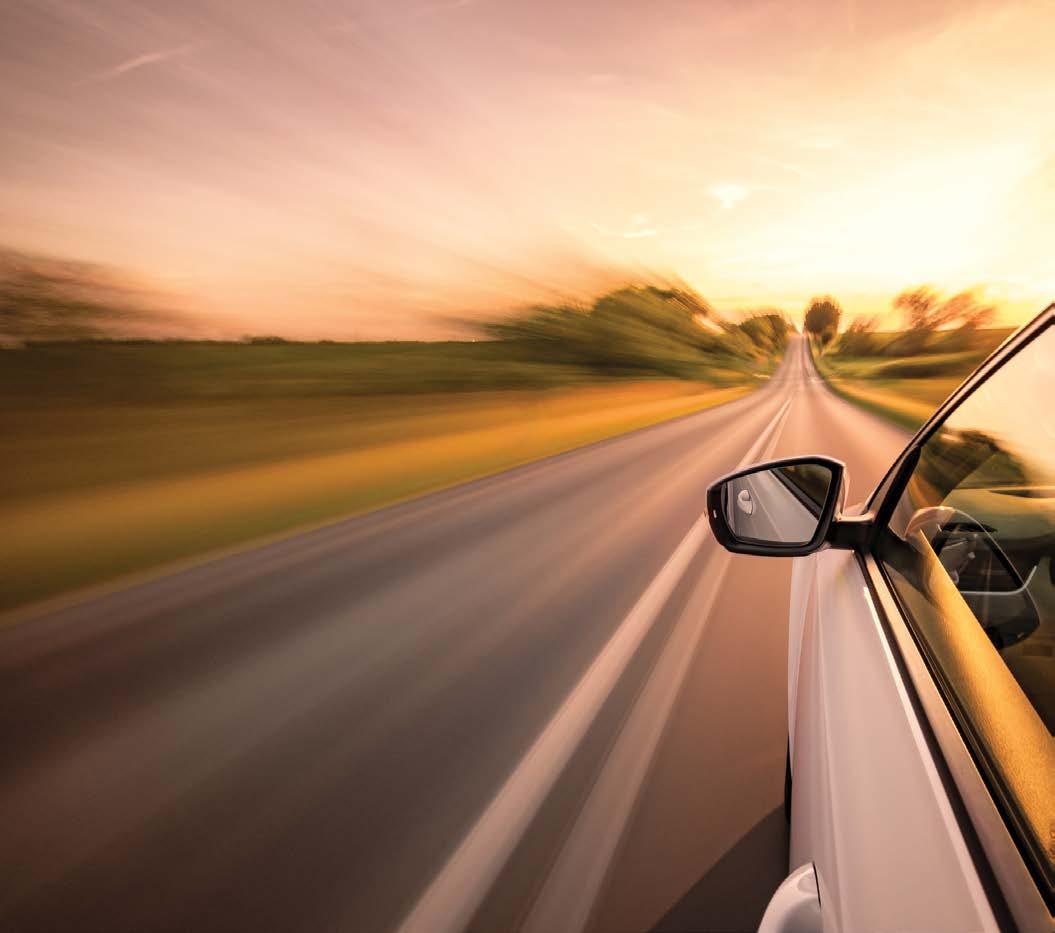
repair and refinishing processes.
Claims severity: Despite a decrease in average claims severity in Q1, EVs continue to have higher severity costs. In the U.S., the severity difference between EVs and ICE vehicles was $1,363 or 29% ($6,066 versus $4,703). In Canada, the difference was $1,700 CAD or 33% ($6,810 versus $5,110 CAD).
The report also highlighted other notable differences between EV and ICE vehicle claims.
Repair labor hours: The average mechanical labor hours for EVs were nearly double those for ICE vehicles, at 3.04 versus 1.66 hours. With the average mechanical labor rate for both the U.S. and Canada exceeding $100 per hour, this additional time adds significant cost to EV repairs.
The extra EV labor hours are likely due to the management of the high-voltage battery, which requires de-energization and often complete removal to protect it during collision
Claims frequency: EV claims frequency increased to 2.26% in the U.S. and 3.41% in Canada, representing a rise of 40% and 38% respectively over Q1 2023.
Parts use and repair: Due to the lack of a robust inventory of aftermarket and recycled parts, EV collision repairs are more likely to involve OEM parts compared to ICE vehicles (89.29% versus 65.14%). EV parts are also more challenging to repair due to their lightweight nature designed to offset heavy batteries. In Q1, 13% of EV parts were repaired compared to nearly 15% for ICE vehicles.
For more detailed insights and to access the full report, visit the Mitchell website at www.mitchell. com/plugged-in.


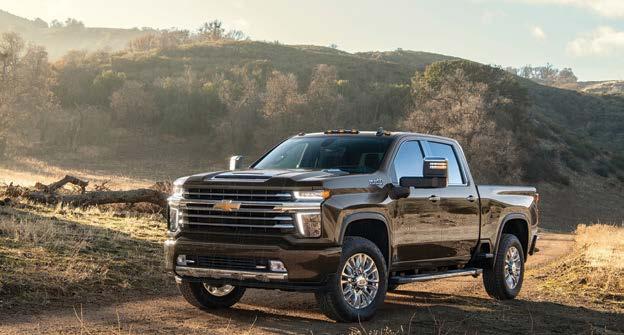

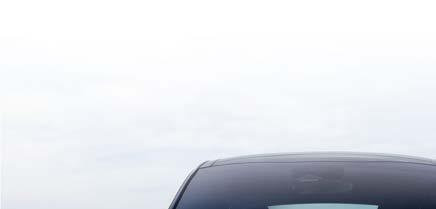
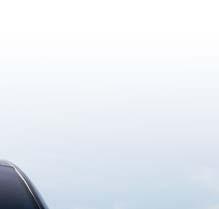




Genuine Kia Parts* are specifically manufactured from original engineering specs to ensure the same exceptional quality, performance and safety as when you first drove your Kia off the lot. Plus, they’re covered by our 12-month Replacement Parts Limited Warranty.
Concord Kia
Concord (888) 811-3058 (925) 685-2952 Fax
M-F 8am - 5:30pm Sat 9am - 1pm
Hayward Kia
Hayward (510) 999-8432
M- F 8am-5pm Sat 9am-4pm slparts@carnamic.com
Rosesville Kia
Roseville (916) 783-8129 (916) 783-1005 Fax
M- F 7am-6pm Sat 8am-4pm parts@rosevillekia.com www.rosevillekia.com
AllStar Kia
San Bernardino (909) 763-4755 (909) 763-4744 Fax
M-F 8am - 6pm Sat 8am - 2pm parts@allstarkia.net www.allstarkia.net
Car Pros Kia Glendale
Glendale (818) 745-1103 (818) 244-0017 Fax
M-F 7am - 6pm duncan@carpros.com


Car Pros Kia
Huntington Beach
Huntington Beach (714) 274-6178 (714) 847-4410 Fax
M-F 7am - 6pm Sat 8am - 4pm jasonr@carpros.com
Citrus Kia
Ontario (800) 583-7042 (909) 390-0948 (909) 390-0982 Fax scunningham@citrusmotors.com www.citrusmotors.com
M-Sat 7am - 6pm Free Local Delivery Ask for Ike, Jimbo, Chris, Juan, Sean, Jeff Se Habla Español
Kearny Mesa Kia
San Diego (800) 635-6669 (858) 560-5033 (858) 560-9648 Fax
Largest wholesaler in San Diego with 17 delivery trucks
Kia of Alhambra Alhambra (626) 289-7803 (626) 289-8807 Fax kip@kiaofalhambra.com
Kia of Carson Carson (310) 221-9101 (310) 507-8595 Fax
M-Sat 7am - 7pm Sun 8am - 5pm www.KiaofCarson.com
Kia of Downtown LA
Los Angeles (213) 342-0923 (213) 342-0980 Fax
M-F 7am - 7pm www.kiaofdtla.com
Kia of Irvine Irvine (855) 847-3592 (949) 777-2342 Fax
North County Kia
Escondido (760) 945-9939 (866) 888-3074 Fax parts@autogrp.com www.northcountykia.com M-F 7am - 6pm In San Diego Over 10 Years
Valley Hi Kia
Victorville (888) 264-6075
M-F 7am - 6pm Sat 7am - 4pm smeyer@valleyhi.com www.valleyhikia.com
Jim Marsh Kia
Las Vegas (877) 274-3820 (702) 946-6084 Fax M-F 8am - 6pm Sat 8am - 2pm johnd@jimmarshauto.com
Towbin Kia
Henderson (702) 868-1234 (702) 567-0037 Fax M-F 7am - 6pm Sat 7am - 4pm jmoore@towbinkia.com www.tkwholesale.com
Car Pros Kia Renton Renton (425) 204-6635 (425) 793-3889 Fax M-F 7am - 6pm Sat 8am - 5pm jgaeir@carpros.com
Lee Johnson Kia Kirkland (425) 823-0188 (425) 284-1790 Fax M-F 7am - 5:30pm Sat 7am - 5pm tthompson@leejohnson.com
As the collision repair industry grapples with the same labor shortage as many other trades, organizations are working together to first promote it as a viable career option and then help potential future technicians develop the necessary skills, education and support.
According to District Administration, a provider of research-backed information on K-12 education, 37% of high school students do not have a plan after high school graduation. Lack of information on college and technical programs, overwhelming options, job market instability, and uncertainty about the future are leaving students and their parents overwhelmed.
In 2023, I-CAR and the Collision Repair Education Foundation (CREF) launched the Collision Careers program, which, on its website, CollisionCareers.com, offers decision making tools, with valuable information and resources for students, parents and educators about the rewarding and lucrative careers available in the industry, as well as tools to help students find the
one that fits their skills and interests.
The program recently introduced #collisiondecision, a hashtag to help students who are choosing a career in the industry amplify their decision on social media. The campaign was launched around May 1, also known as Decision Day, when many of their peers are announcing plans to attend college.
“Decision Day can be a stressful time for graduating high schoolers, especially those unsure of their next steps,” said Dara Goroff, vice president of planning and industry talent programming at I-CAR.
“The automotive collision repair industry offers a dynamic and rewarding career path that many should consider. We’re committed to highlighting these opportunities and providing clear pathways for motivated individuals to enter this exciting field. By talking about the challenges or feelings students may have around Decision Day, we are aiming to turn what could feel like a negative experience into a positive one where they discover the best future for themselves.”
Meanwhile, the TechForce
Foundation and SkillsUSA announced a collaboration to introduce SkillsUSA members to the foundation s careerbuilding resources via TechForce , an online hub that aids students in navigating their career journey. This platform connects students with scholarships, events, apprenticeships and job opportunities.
“Decision Day can be a stressful time for graduating high schoolers, especially those unsure of their next steps,”
DARA GOROFFVICE PRESIDENT OF PLANNING AND INDUSTRY
In return, TechForce will promote SkillsUSA membership to its network, emphasizing opportunities for leadership, professional development, enhanced curriculum, industry networking and real-world experiences.
This nonprofit-to-nonprofit collaboration showcases what can happen when two organizations
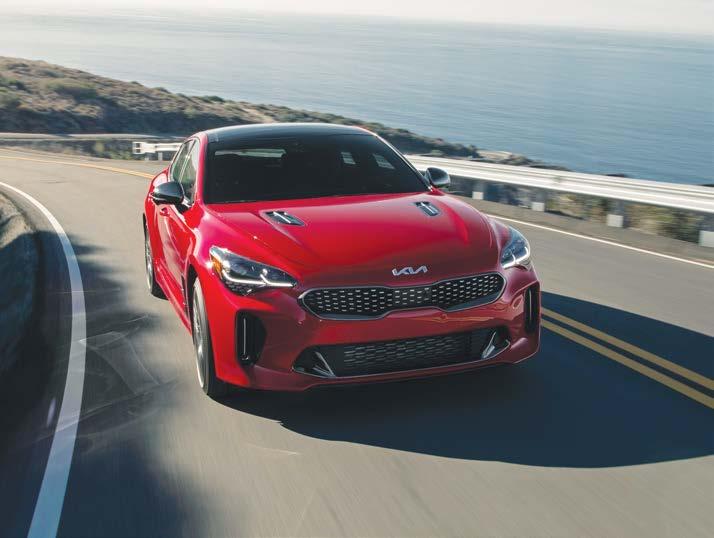
work together for a common purpose, said Jennifer Maher, CEO of TechForce Foundation. Both organizations are committed to the outcome of a skilled, passionate workforce, so ensuring our communications channels crosspollinate ensures our students, and industry, win. With TechForce having over $4 million in scholarships to award this year alone, and SkillsUSA being active in nearly 5,000 schools and over 21,000 classrooms nationwide, it s a natural alliance that supercharges results for the next generation of skilled technicians.
SkillsUSA is the No. 1 workforce development organization dedicated to students, added Chelle Travis, executive director of SkillsUSA. Our organization stands ready to meet the growing need of connecting business and industry with skilled professionals. SkillsUSA s vision is to produce the most highly skilled workforce in the world, providing every member the opportunity for career success. With partners like TechForce beside us, it is a true winwin for everyone — students and the American economy alike.

Certified Collision Group (CCG) announced the appointment of Casey Wallace as its new business development director, effective June 1. Wallace brings a wealth of experience to the role, with 26 years in both distribution and manufacturing segments of the collision repair industry.
In his previous position as strategic accounts manager for AkzoNobel Vehicle Refinish, Wallace excelled in driving substantial sales growth and leading strategic sales initiatives. His tenure at AkzoNobel highlighted his ability to execute sales and development strategies effectively, delivering strong results consistently.
“I am looking forward to joining the team and utilizing my experience to foster new opportunities and contribute to Certified Collision Group’s growth,” said Wallace.
With Wallace on board, CCG is poised to enhance its growth trajectory and strengthen its position within the collision repair industry.



Repairable plastic parts are often discarded because many estimators do not know how to determine the repairability of the part, negatively impacting the shop’s labor hours billed, its repair versus replace ratio, and its cycle time.
To combat this issue, Polyvance announced its new EPR-02 Estimating Plastic Repair course, an instructor-led, structured course provided by Polyvance personnel in the customer’s shop, to educate shop estimators on the variables involved in estimating the repair of damaged automotive plastics.
John Wilburn, head training instructor for Polyvance, said the training is becoming more necessary than ever as automakers use more plastic rather than metal to manufacture parts, as lighter materials translates to an increase in fuel efficiency in ICE vehicles and more miles from a charge in EVs.
Polyvance’s online estimators training course, EPR-01, which has been available for several years,
is very popular with insurance companies, Wilburn said, but the company felt it was time to add a live in-person estimators training course to complement its other inperson training courses.
“Nothing compares to in-person training,” Wilburn said.
Polyvance developed the new course to educate estimators and other collision repair professionals on the variables involved when estimating damaged automotive plastic. After completing it, estimators will be able to write more accurate estimates for plastic repair, and knowledgeably discuss the plastic repair process with the customer and/or technicians who perform the repairs.
“When estimators and technicians have the knowledge and know-how to accurately estimate and repair damaged plastic, the repair process goes a lot smoother,” Wilburn said.
The EPR-02 Estimating Plastic Repair course is a three-hour session that may be attended by up to six students. The course


was recently approved by I-CAR for three hours of annual training credit under their Industry Training Alliance program. Polyvance is a Sustaining Partner of I-CAR.
In the course, students will learn how to assess the damage of automotive plastic parts, focusing on bumper covers and headlights. The majority of the course will consist of a stimulating discussiondriven classroom session. The instructor will also provide an inshop demonstration of a bumper cover repair.
Course objectives include recognizing plastic repair opportunities, understanding the different methods of plastic repair, making an informed decision on repairing or replacing damaged plastic, accurately gauging the severity of damage on bumper covers and headlights, and determining if a damaged textured part can be repaired.
Call Polyvance at 800-633-3047 or email training@polyvance.com for more information or to register for the course.
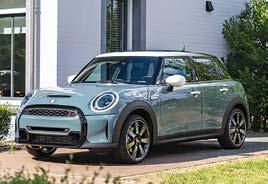
5596 N. Blackstone Ave. 800-462-2231
559-436-6041
BMW of San Diego
San Diego
858-223-5060
858-277-7928 Fax
M-F 7am-6pm Sat 9am-2:30pm jwood@penskeautomotive.com
Century West BMW
North Hollywood
818-432-5819
818-769-1520 Fax
559-436-0743 Fax Mon-Fri 7am - 6pm; Sat 8am - 4pm etaylor@lithia.com So. California
M-F 8am-6pm Sat 8am-5pm eperez@centurywestbmw.com
New Century BMW Alhambra
626-576-2867
626-457-2027 Fax M-F 7am-7pm Sat 8am-5pm jason.rodriguez@ncbmw.com www.ncbmw.com
818-508-5082 Fax M-F 8am-5pm Sat 8am-5pm allanv@miniuniversalcity.com
Opus IVS conducted an online study of more than 3,000 collision repair shop professionals to better understand how the strategic adoption of diagnostic solutions enhances shops’ efficiency and profitability.
The study, conducted during the first quarter of 2024, indicated the right diagnostic solution can minimize issues related to insurance reimbursement processes, reduce technician shortages, and improve overall operational efficiency.
Insurance reimbursement issues affect approximately 33% of repair orders (ROs) on average, according to the study, stemming from discrepancies in assessing repair costs, delays in processing claims, and disputes over coverage. The study showed selecting the appropriate diagnostic scanning partner can potentially reduce insurance reimbursement issues by up to one-third (33%).
More than 70% of shops reported to the study facing a shortage of one or more technicians. By leveraging advanced diagnostic capabilities and remote expertise, collision repair shops can attract and retain skilled technicians.
The U.S. Department of Transportation’s National Highway Traffic Safety Administration (NHTSA) announced new vehicle fuel economy standards projected to save Americans more than $23 billion in fuel costs and reduce pollution. Starting with model years 2027-2031 for passenger cars and 2029-2031 for light trucks, fuel economy will increase by 2% annually. This will bring the average light-duty vehicle fuel economy to approximately 50.4 miles per gallon by model year 2031, offering more than $600 in fuel savings per vehicle over its lifetime.
Heavy-duty pickup trucks and vans will see even more significant improvements. Fuel efficiency for these vehicles will increase by 10% annually for model years 20302032 and by 8% annually for model years 2033-2035. By model year 2035, these vehicles will average about 35 miles per gallon, saving owners more than $700 in fuel costs over their vehicle’s lifetime.
“Not only will these new standards save Americans money at the pump every time they fill up, they will also decrease harmful


pollution and make America less reliant on foreign oil,” said U.S. Transportation Secretary Pete Buttigieg. “These standards will save car owners more than $600 in gasoline costs over the lifetime of their vehicle.”
These standards are projected to save almost 70 billion gallons of gasoline through 2050 and prevent more than 710 million metric tons of carbon dioxide emissions by the same year. “President Biden’s economic and climate agenda has catalyzed an American clean energy and manufacturing boom,” said President Joe Biden’s National Climate Advisor Ali Zaidi. “From day one, the president has centered America’s workers, and unions that built our middle class, in this transformative agenda, positioning the U.S. auto sector as a leader in the world. The president’s agenda is working.”
“When Congress established the Corporate Average Fuel Economy program in the 1970s, the average vehicle got about 13 miles to the gallon. Under these new standards, the average light-duty vehicle will achieve nearly four times that at
50 miles per gallon,” added NHTSA Deputy Administrator Sophie Shulman. “These new fuel economy standards will save our nation billions of dollars, help reduce our dependence on fossil fuels, and make our air cleaner for everyone.”
The development of these standards involved extensive engagement with various stakeholders, including consumers, unions, automakers, states and environmental advocates. The new fuel economy standards also complement the EPA’s emissions standards, ensuring a coordinated approach to improving vehicle efficiency and reducing environmental impact.
The final rule aligns with Congress’ direction to conserve fuel and promote American energy independence and automotive manufacturing. While NHTSA does not consider electric and other alternative fuels when setting standards, manufacturers have the flexibility to use all available technologies for compliance, including advanced internal combustion engines, hybrid technologies and electric vehicles.






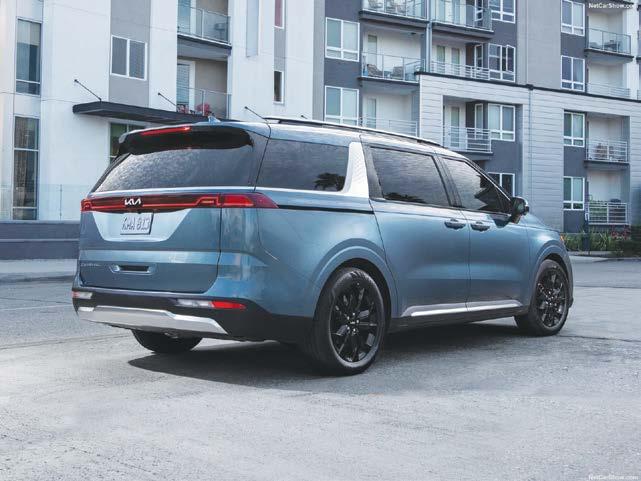

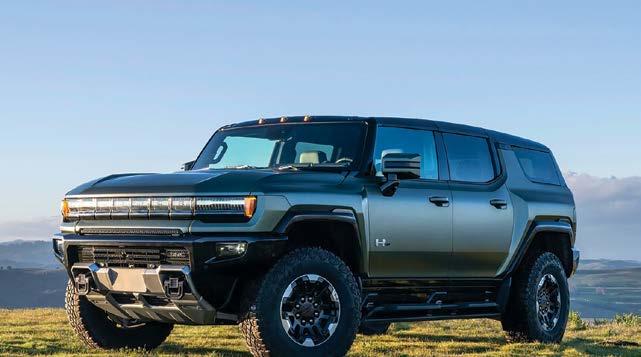
American Chevrolet MODESTO
209-491-7810
209-575-2564 Fax
M-F 7:30 am - 5:30 pm Sat 9 am - 2 pm gmparts@americanchevrolet.com www.americanchevrolet.com
Blackstone Chevrolet Wholesale Parts FRESNO
559-438-5875
559-438-4345 Fax
M-F 7:30am – 5:30pm Sat 8am – 4:30pm bharman@blackstonegm.com
Chase Chevrolet STOCKTON
209-475-6620
209-475-6708 Fax
M-F 7am - 5pm Sat 7:30am-4:30pm cesar@chasechevrolet.com
Dublin Chevrolet Cadillac Buick GMC DUBLIN
925-828-8251
925-829-2941 Fax
M-F 7am - 6pm dublinchevyparts@cacargroup.com www.dublinchevrolet.com
FH Dailey GM Parts Center
SAN LEANDRO
800-4A-GMPART
510-351-0534
M-F 8 am - 5 pm Sat 8 am - 4 pm parts@fhdailey.com www.fhdailey.com
Michael Stead Cadillac
WALNUT CREEK
925-934-5022
925-934-0336 Fax
M-F 8 am - 5 pm Sat 8 am - 3 pm steadparts@gmail.com
Courtesy Chevrolet SAN DIEGO
800-336-1404
619-297-4023 Fax
M-F 7am - 6pm Sat 8am - 5pm www.courtesysandiego.com
Paradise Chevrolet
VENTURA
888-5-CHEVY-5 (888-524-3895)
805-642-0134
805-644-7214 Fax
M-F 7:30am - 6pm Sat 8am - 3pm
626-795-6872 Fax M-F 7:30am - 6pm Sat 8:30am - 2pm parts@thorsonmotorcenter.com Denny Menholt Chevrolet BILLINGS
406-896-3111
406-896-3924 Fax M-F 7 am - 6 pm tsoltis@dennymenholt.com
Corwin Buick GMC RENO
775-333-8777
775-322-1837 Fax
M-F 8am - 5:30pm ahardie@corwinauto.com www.corwinbuickgmc.com
Michael Hohl Motor Company CARSON CITY
775-884-8619
775-884-8645 Fax
M-F 7 am - 6 pm Sat 8 am - 5 pm gmparts@michaelhohl.com
Camp Chevrolet
SPOKANE
509-456-7860
509-458-3792 Fax
M-F 7:30am - 5pm zacharydeason@lithia.com www.campchevrolet.com Nevada Montana Washington
Automakers reported year-overyear sales gains in May, but one analyst reported dealers will face significant challenges in June as new and certified vehicle inventories are at their highest levels in three years, offering consumers a broader selection of options.
Ford
Ford Motor Company announced its EV sales nearly doubled in the first five months of 2024, surging by 87.8% compared to the same period in 2023, while hybrid sales increased by 50.9%.
Overall, Ford’s U.S. sales from January to May saw a 5.6% increase over the previous year, totaling 877,685 units delivered. Despite the impressive gains in EV and hybrid segments, ICE vehicles still dominate with an 87.3% share of total sales, equivalent to 766,428 units. In comparison, hybrids hold an 8.4% market share with 74,049 units sold, and EVs represent 4.3% with 37,208 units sold.
The sales data revealed a continued preference for larger vehicles among consumers. Trucks lead the sales with 460,006 units, a 2.5% increase. SUVs followed closely with a significant 9.9% increase, totaling 394,141 units sold. However, the car segment
remains small, with only 23,538 units sold, representing a minimal 0.4% increase, entirely attributed to the Ford Mustang, the only remaining car model in Ford’s American lineup.
Among individual models, the Ford Mustang Mach-E experienced
2023 models. The E-Transit van achieved a sales growth of 111.2%, with 5,378 units sold.
In the ICE segment, the Ford Maverick stood out with a stellar growth of 84.9%, totaling 64,754 units sold. Conversely, the Ford Ranger saw

the most impressive increase, with sales rising by 88.7% to 18,737 units, attributed to price discounts that have attracted more buyers. Ford’s other electric offerings, the F-150 Lightning truck and the E-Transit van, also showed strong sales growth. The F-150 Lightning sold 13,093 units year-to-date, a 78.5% increase, driven by discounts on the remaining

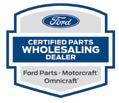

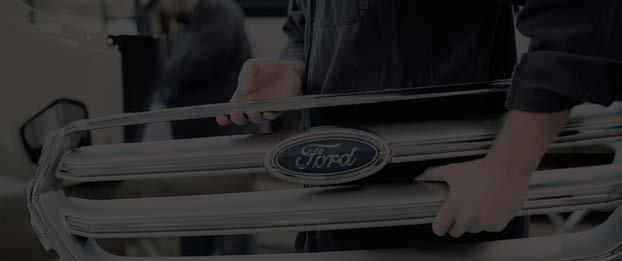
a significant decline of 44.4% in yearto-date sales, reaching 10,948 units, primarily due to production shortages.
The Ford Bronco also experienced a
Honda American Honda reported total sales of 127,129 units in May, marking the company’s second-best sales month this year. This surge represents a 14% year-over-year increase. Honda brand sales topped 114,000 units in May, continuing a strong trend with four consecutive months exceeding 100,000 units. Honda’s electrified models contributed significantly to this growth, with 26,912 units sold, driven primarily by the CR-V hybrid, Accord hybrid and the new Prologue. The CR-V, in particular, saw sales exceeding 30,000 units for the fourth consecutive month, with hybrid versions making up more than 50% of this figure.
Additional highlights for the Honda brand included HR-V sales, which jumped by over 45% year-over-year, totaling more than 13,000 units. The Pilot saw 12,500 units sold, particularly driven by the TrailSport model. Both the Passport and Odyssey posted their best sales months of the year, while Civic sales surpassed 20,000 units
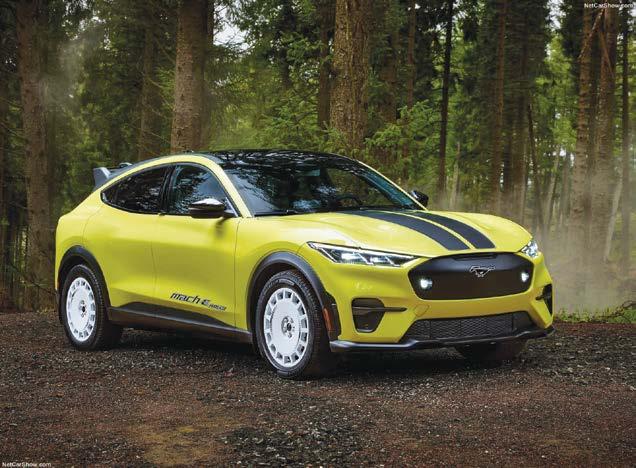
were key contributors, with the MDX achieving more than 6,300 units and the RDX topping 3,200 units. The Integra had its best month of the year, selling more than 2,500 units and leading the premium gateway segment with a market share exceeding 40%. Additionally, the all-electric ZDX A-Spec units began arriving at dealerships, with the Type S variant expected in early June.
American Honda’s May sales positioned the company well ahead of its projected 10% growth for the year, with 577,539 units sold through May.
Hyundai
Hyundai Motor America reported total May sales of 78,485 units, a 12% increase compared with May 2023. Hyundai set total sales records in May for IONIQ 5 (+82%), IONIQ 6 (+13%), Tucson HEV (+54%), Santa Fe HEV (+116%), Palisade (+45%) and Santa Cruz (+2%). This was the best all-time retail and total sales for IONIQ 5 and Santa Fe HEV. Hyundai s total EV sales were up 42% in May.
Mazda
Mazda North American Operations reported total May sales of 35,562 vehicles, an increase of 6.9% compared to May 2023. Year-todate sales totaled 166,790 vehicles sold, an increase of 8.3% compared
to the same time last year. With 26 selling days in May, compared to 25 the year prior, the company posted an increase of 2.8% on a Daily Selling Rate (DSR) basis.
CPO sales totaled 6,725 vehicles in May, an increase of 28% compared to May 2023.
Highlights included the best-ever sales of CX-50, with 6,307 vehicles sold, and the best-ever May sales of CX-30, with 8,305 vehicles sold.
Subaru
Subaru of America, Inc. reported 58,356 vehicle sales for May 2024, a seven percent increase compared with May 2023 (54,531). SOA also reported year-to-date sales of 267,215, a 7.3 percent increase compared with the same period in 2023.
Outback was the top seller with 16,506 vehicles sold, followed closely by Forester with 15,345 vehicles sold, a 45 percent increase over May 2023. Crosstrek also had a strong month with 13,836 vehicles sold, a 32.3 percent increase over the same month in 2023. Solterra achieved its best month ever at 1,546 vehicles sold, beating its previous record (1,456) from last month.
Toyota
Toyota Motor North America reported May sales in the U.S. of 216,611 vehicles, up 15.7% year over year on a
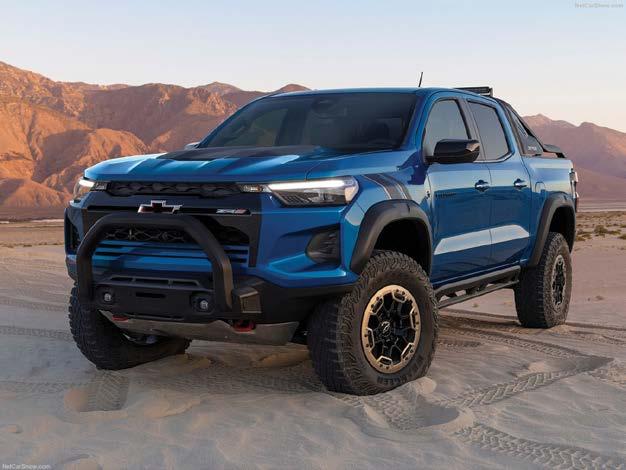
volume basis. Of those, 85,335 were electrified vehicles, up 68.7% year over year on a volume basis.
Movement for new, used and certified vehicles surged to multi-year highs in May, but dealers are bracing for a challenging month in June, according to ZeroSum’s June State of the Dealer report. The comprehensive assessment reveals a robust automotive market, particularly for new and certified vehicles, yet highlights the hurdles individual dealers must overcome due to heightened competition.
The report indicated new and certified vehicle inventories are at their highest levels in three years, offering consumers a broader selection of options. New vehicle supply rose to 2.89 million in May, a 2.8% increase from April, with the industry eyeing the 3.0 million mark. Certified inventory reached its peak since April 2020, while underlying metrics such as turn rates and daysto-move show sustained levels driven by higher supply.
“The new vehicle movement count is very encouraging and points to a continuing resilience in the marketplace,” said Jeff Englishmen, vice president of dealer success at ZeroSum. “Even in the face of elevated prices and stubbornly
high interest rates, consumers are still taking advantage of the improved availability that comes with strong inventory levels.”
Used vehicle inventories saw a slight increase for the second consecutive month, maintaining a narrow range since the fall. Used vehicle movement surpassed the 1.3 million mark for the second time in three months, with a 30day forecast predicting a continuation of this trend at 1.29 million.
“The recent strength in used vehicle movement is a welcome development, but doing so in light of a flat inventory picture is even more impressive,” said Englishmen. “The ongoing pricing differential with new cars is playing a role in used performance and is likely to continue to do so in the near future.”
Despite these positive trends, the report concluded dealers will face significant challenges due to increased competition.
“The State of the Dealer report strives to address the question of whether it is going to get harder or easier for dealers to sell a vehicle in the next 30 days,” Englishmen said. “At an overall industry level, the answer is ‘easier,’ though the reality for an individual dealer is that there is greater competition that comes along with the wider alternatives that consumers currently have to choose from.”

The Women’s Industry Network (WIN) announced a record 30 recipients of its 2024 WIN College Student Tuition and Conference Scholarship Awards, which gave select recipients tool kits and/or scholarship funds.
This year also saw a record number of student applications, as WIN partnered with the Collision Repair Education Foundation (CREF) to expand its reach to those looking for a career in collision repair. These scholarships are presented annually to deserving students enrolled in post-secondary collision repair technology programs.
All award recipients and applicants will be eligible to partake in WIN’s monthly mentoring program, where they participate in student engagement group calls and share best practices with collision industry professionals as well as their peers.
“WIN student members will connect with other members who are in a similar stage in their careers. The mentoring program also provides connection with women in the industry who can share relevant experiences from their success,” said Kottschade. “These networking groups will support new female

As part of the application process, each WIN Scholarship applicant registered for and received a complimentary WIN Student Membership. WIN also supports collision repair instructors with access to free WIN memberships through the Pay It Forward campaign.
The program, which was expanded this year, offers awards on two financial levels, ranging from $500 up to $2,500, based on the selection team’s evaluation of an application and the candidate’s review process, explained Laura Kottschade, 2024 chair of the WIN Student Relations Committee. Recipients can also receive wellstocked new tool kits, valued at more than $500, which included four additional tools per set this year.
“Those scholarship recipients receiving tuition monies and tools were acknowledged in either the Champions or Stars levels,” Kottschade said. “But, because we had so many applicants, two new scholarship categories, Trailblazers and Legends, were added this year where additional recipients were awarded either a financial stipend or a full tool kit.”
FL, McFatter Technical College
Alicia Davis, Clarksville, TN, Lincoln College of Technology-Nashville
Tamara Fowlkes, Chattanooga, TN, Chattanooga State Community Technical College
Autumn Havey, Boise, ID, Dennis Technical Education Center
Desirae Kane, Lawton, OK, Great Plains Technology Center
Izzy Povod, Williamsport, PA, Pennsylvania College of Technology
Alexa Rogers, Bruceton, TN, Tcat
Henry Carroll
Lauren Schmidt, Kennett Square, PA, Automotive Training Center
Mia Seacrist, Norfolk, NE, Northeast Community College
Krystal Vazquez, McKinney, TX, Colllin College technical campus
Stars Recipients:
Charlotte Lake, Spring, TX, Universal Technical Institute
Claudia Mandujano, Pelham, AL, Lincoln Tech
Trailblazers Recipients:
Jamie Achenbaugh, Council Bluffs, IA, Metropolitan Community College
Victoria Alexander, Rexburg, ID, Idaho State University
Esperanza Calderon, Marissa, IL, Career Center of Southern Illinois
Mikayla Hoth, Brooklyn Park, MN, Dunwoody College of Technology
Bobbi Lockett, Chattanooga, TN, Chattanooga State Community College
Magaly Mora, Chicago, IL, Kennedy Kin College
Keyla Orellana, Houston, TX, Universal Technical Institute
Briana Onofre, Minneapolis, MN, Dunwoody College of Technology
Cher Riopelle, The Woodlands, TX, Universal Technical Institute
Samantha Rivera, Highland Mills, NY, Hudson Valley Community College
Legends Recipients:
Amanda Baker, Wake Forest, NC, Wake Tech Community College
Carolyn DesJardin, Clarksville, TN, Tennessee College of Applied Technology–Henry/Carroll
Mattie Johnson, Bagley, WI, Southwest Wisconsin Technical College
Bailey Longstaff, Ottawa, KS, Washburn Tech University
Jazmyne Martinez, Denver, CO, Warren Tech
Diamond Molina, San Antonio, FL, Hillsborough Community College
Kyla Sanders, Borden IN, Prosser Career and Education Center
Madysen Smith, Dauphin, PA, Dauphin County Technical School
entrants to the collision repair field and hopefully create lifetime friendships that further WIN goals for longer term career advancement and retention.”
Funds to support the scholarship program come from various sponsors and WIN’s general fund, as well as the recent scholarship walk at its Annual Conference.
“This year we have separated the Scholarship Walk and the Scholarship Fundraiser to simplify it for participant involvement, but there is still the opportunity to donate to the scholarship cause,” said April Keim and Christina Sepulveda, WIN Scholarship Fundraising co-chairs. “Fundraising is still open through May 31, as we have partnered with RallyUp and created the WIN Scholarship Fundraiser which allows those inspired to support our future women technicians of collision repair to still contribute to this important cause.”
Champions Recipients:
Teisha Chambers, Miami Gardens,

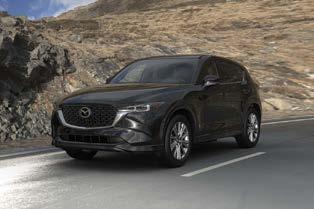
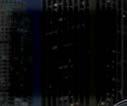
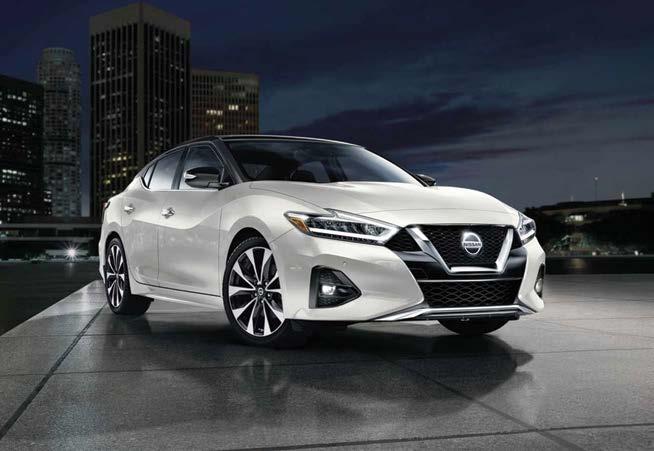


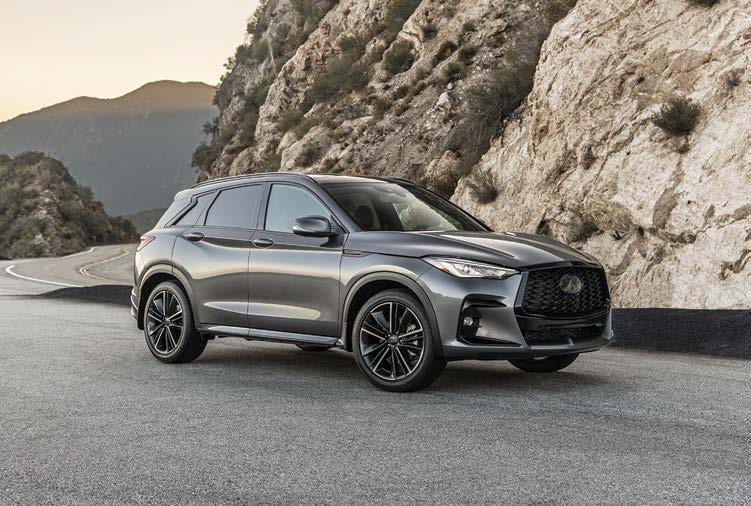
DOWNEY NISSAN
Downey
562-334-1188 (562) 334-1195 Fax M-F 7-5 wholesaleparts@downeynissan com
MOSSY NISSAN
ESCONDIDO
Escondido
888-292-0402 (760) 746-4300 (760) 739-5794 Fax
M-F 7:30-5 mikebe@mossy�com RonH2@mossy com
NISSAN OF BAKERSFIELD
Bakersfield
888-402-6915 (661) 835-0389 Fax M-F 7-6, Sat. 8-5 www nissanofbakersfield com
NISSAN OF VAN NUYS
Van Nuys
818-374-4421 (818) 787-8400 (818) 908-9520 Fax M-F 7-6:30, Sat. 7-6 wholesaleparts@vannuysnissan com www nissanofvannuysparts com
TEMECULA NISSAN
Temecula 951-972-8430 (951) 972-8396 Fax
M-F 7-6, Sat. 7-6, Sun. 8-5 wholesaleparts@temeculanissan�com
OF VAN NUYS
Van Nuys
818-374-4493 (818) 787-8400 (818) 809-2727 Fax
M-Sat. 8-5 wholesaleparts@vannuysinfiniti com www infinitiofvannuys com
FUTURE NISSAN
Roseville 916-677-5251 (916) 786-0743 Fax M-Sat. 7:30-6 wholesale@futurenissan com Parts FutureNissan com
Escondido 888-292-0402 (760) 746-4300 (760) 739-5794 Fax M-F 7:30-5 mikebe@mossy com RonH2@mossy com S. CALIFORNIA
MOSSY INFINITI OF ESCONDIDO




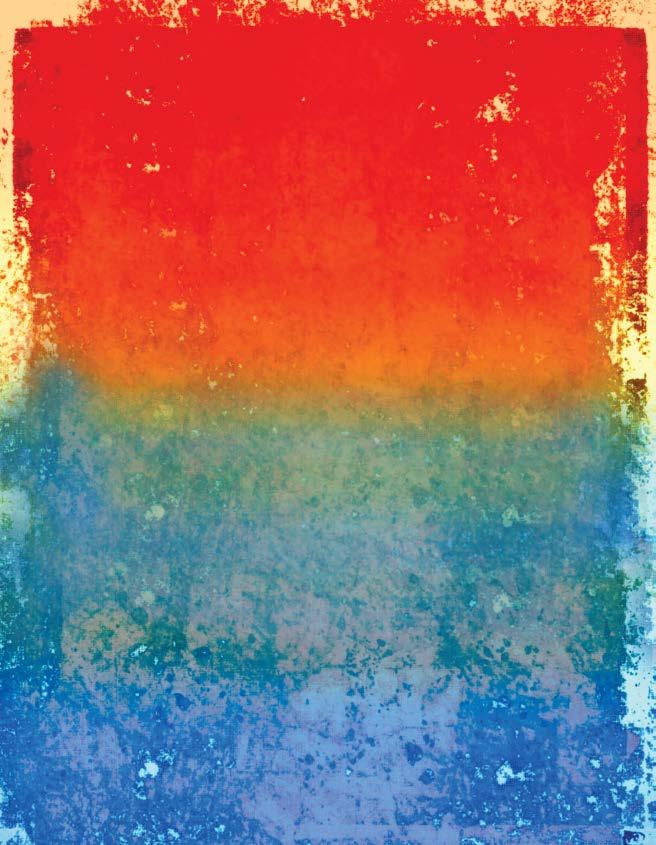










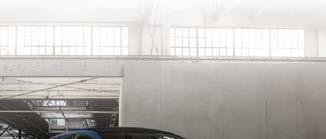
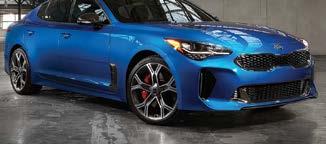

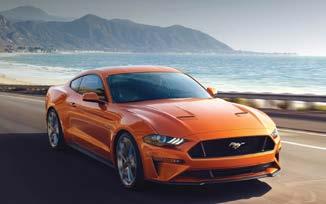


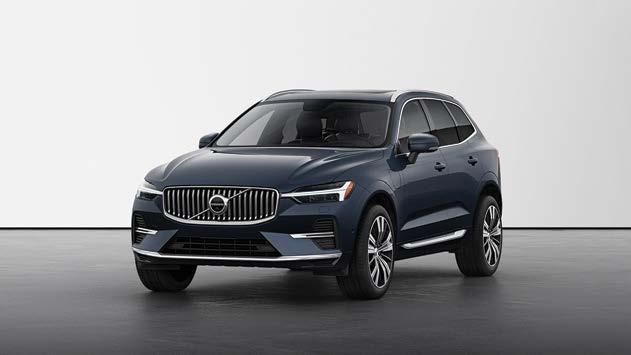


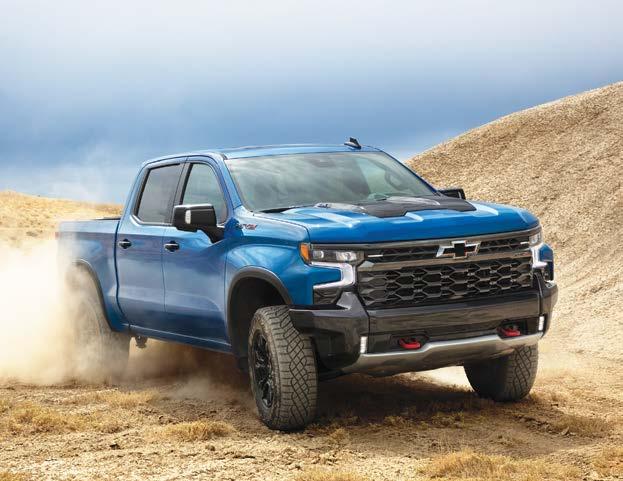

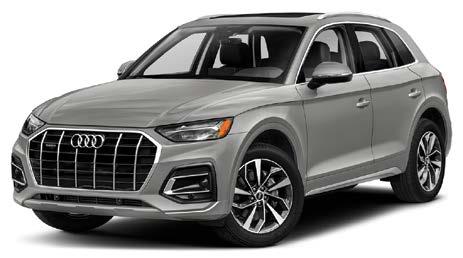
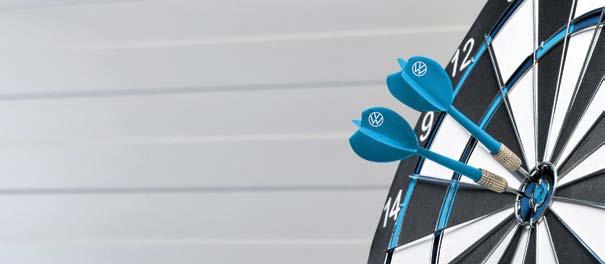
Galpin Volkswagen North Hills
888 840-8416
Fax: 818-778-2090 www.galpin.com
Volkswagen Pasadena Pasadena
626-577-0300
866-654-8591
Fax: 626-568-0387
M-F 7:30am-6pm; Sat 8am-6pm
Niello Volkswagen Sacramento
916-482-5790
Fax: 916-481-9579
Mon-Sat 8am-5pm vw.parts@niello.com
WASHINGTON
University Volkswagen Seattle
206-634-8200
Fax: 206-547-1581 M-F 7am-6pm parts@uvwaudi.com www.universityvw.com

Total Loss Consulting has now launched nationwide, helping consumers receive the correct value for their totaled vehicle. Body shops throughout the country now have a resource in Total Loss Consulting to which they can refer their customers.
Total Loss Consulting (TLC) helps consumers receive the actual cash value (ACV) for their totaled vehicle. TLC will conduct a free comprehensive market evaluation to determine if a settlement offer is of fair market value. If the offer is not the correct value, TLC will ensure the consumer receives the correct compensation for their totaled vehicle.
Body shops can visit TLC’s body shop page, totallossconsulting.com/ bodyshop.aspx, to learn more and receive free literature to share with their customers.

Vehicle owners with a total loss vehicle can contact Total Loss Consulting directly through the consumer website, TotalLossConsulting.com.
Co-President & Publisher
Nathan Gregory
Co-President & Publisher
Paul Stepanek
Editor Abby Andrews
Contributing Writers
Mike Anderson, Stacey Phillips, Cole Strandberg, John Yoswick
Advertising Sales
Joe Momber, Norman Morano, Steve Sklenar
Office & Media Manager
Kelly Cashman
Director of Digital
Bryan Malinski
Art Director
Rodolfo Garcia
Design Director
Vicki Sitarz
Accounting & HR Manager
Heather Priddy
Content Manager
Randi Scholtes
Serving Alaska, California, Hawaii, Idaho, Montana, Nevada, Oregon, Washington and Wyoming. Autobody News is a monthly publication for the autobody industry. Permission to reproduce in any form the material published in Autobody News must be obtained in writing from the publisher.
©2024 Autobody News, LLC.
Autobody News P.O. Box 1516 Carlsbad, CA 92018 (800) 699-8251 (760) 603-3229 Fax www.autobodynews.com editor@autobodynews.com
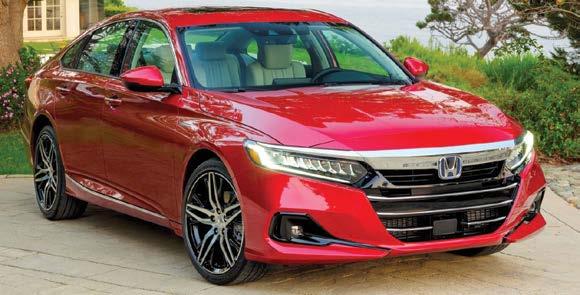



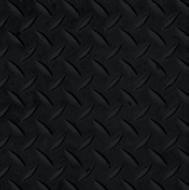





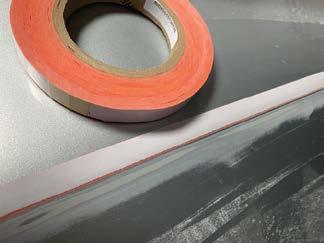
• Take
• Check photo to avoid






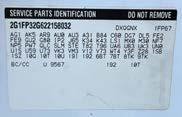
• Capture the label from a straight-on angle to prevent distortion.
• Maintain a consistent distance to include the entire label in the frame.
TOAVOIDSERIOUSINJURYORDEATH: •Donotleanagainstthedoor. •Donotuseseatcoversthat Seeblocksideairbagdeployment. owner’smanualformoreinformation.POURÉVITERDESBLESSURES GRAVESOUMORTELLES: •Nevousappuyezpascontrelaporte. •N’utilizezpasuncouvre-siège quipeutbloquerledéploiementdu Voircoussingonflablelatéral.lemanuelduconducteurpour deplusamplesrenseignements.
• Avoid extreme zooming or cropping to maintain accuracy.
• Submit photos in JPEG or PNG format.


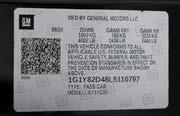
Conformstoregulations:2016MY California: Not for sale in states with California emissions standards. TWC/HO2S/WR-HO2S/CAC/TC/DFI



• Provide photos from different angles if the label has complex details.
• Ensure all relevant information is captured in the photo.


• Proof photos for clarity.
• Verify that all required details on the label are visible.





